
|
May Through August 2008
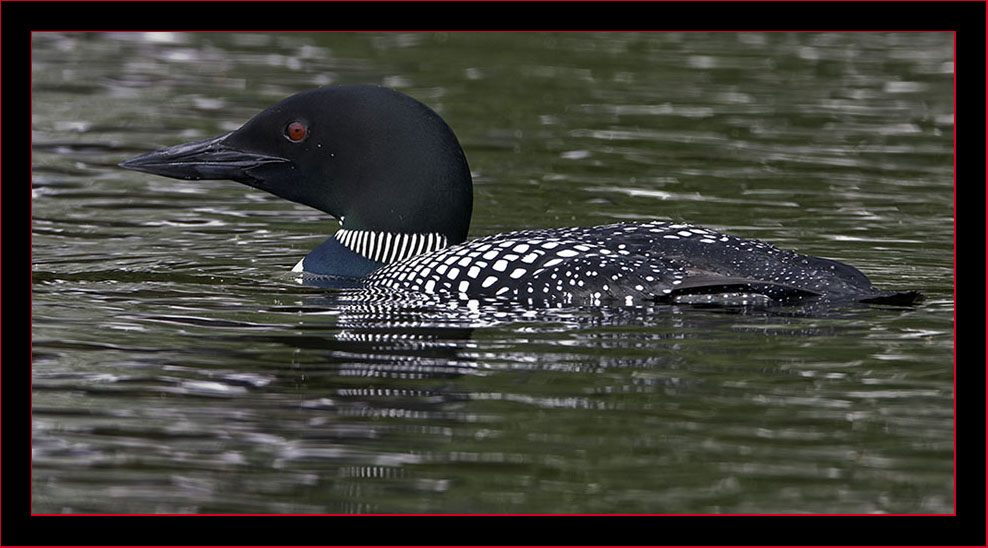
|
There is much of merit weather-wise that goes on in the State of Maine... I’ve always loved the fall but the long winter always follows - a season I’m not especially fond of and a situation that
is exacerbated as I age. There are several months that stand out of the group in my view however. May is one when the last vestiges of winter are finally gone for the year – we occasionally receive
some nasty snowfall in April and often snow remains on the ground - by May this is no longer an issue and everyone is more than ready to see summer. May also brings the warblers as the spring bird migration commences in earnest. Even
non-birders are somewhat aware of this as the birds in general perk up and the New England/Maine world renews. Another is September and the advent of fall. If you like astronomy or
astrophotography as I do (doesn’t everybody?), this is one month to plan around because the odds of enjoying clear sky conditions over the September new moon are greater than any other month in
our state. In the case of this article it’s the month of May that is our focus as we begin.
Spring Peeper up closeCanon 1Ds Mark III, 1/60th second @ f/10, ISO 400 with 100mm f/2.8 Macro lens handheld |

|

|
I was equipped with my Canon 1Ds Mark III, 5d and 40d cameras, 600mm f/4L and a good selection of shorter focal length lenses with accessories ready – I was prepared and awaiting the
2008 bird migration. Before it was done I took the best part of two weeks off work and was in the field with my cameras on a near daily basis.
Because I’m a equipment orientated individual and what people are using for field work is always of interest, I generally post a link to
‘My Canon Photographic System’ webpage which
includes comments and sample shots with my lens set. Most of what I employ is detailed here.
Northern Harrier in Flight - Gray, MaineCanon 1Ds Mark III/EF 600mm F/4L lens extended to 840mm, 1/100 second @ f/8, ISO 400 on tripod |
Early in the month I’d been monitoring a site in the town of Gray about twenty miles north of where I live. A friend of mine was renting a place with a backyard that in essence consisted of a
wetland; this was an interesting environment to observe and investigate as the weather warmed. I usually had the camera tripod mounted and ready to shoot as we sat around the yard and talked,
watching for whatever may show up around the feeders and scanning the grounds and across the water with binoculars.
Downy Woodpecker flight shotCanon 1Ds Mark III/EF 600mm F/4L lens extended to 840mm, 1/1000 second @ f/8, ISO 400 |

|
Typical views in Maine wetlands - Canada Goose & Mallard


|

|
Every now and then one could find a warbler migrating through at this site but this early May wasn’t all that active outside of the birds one usually observes. You just never know what may show up; it
pays to look and I’d found this environment can offer ducks and perching birds that aren’t common to our backyard feeders as they pass through. The activity level was improving
and many of the birds you’d expect to see were frequenting the area as I took exposures over several sessions. I’ve been imaging birds for a number of years and photographing the
same species can become redundant at times. This is one reason I take my gear on the road to seek out new subjects… On the other hand, there’s always the possibility of obtaining a superior, critically focused shot or one where a subject is displaying
behavior in a moment you may just capture if you’re in the field and ready. A detailed image of a bird you see every day can provide a new insight into how unique they really are.
Brown-headed Cowbirds - Gray, MaineCanon 1Ds Mark III/EF 600mm F/4L lens extended to 840mm, 1/1000 second @ f/8, ISO 400 on tripod |
After a few years when you’ve obtained images of most of the birds common to your area you do become a bit fussier like only trying to photograph a particular bird in breeding plumage for example.
Most photographers who do this professionally shoot from blinds or established shoot zones where they have control of their subject’s placement, background and lighting conditions. And
you can trust there are some truly outstanding photographers selling images and filling magazines with their results. Controlled imaging is something I rarely do – I conduct operations like a hunting
expedition - take the field seeking whatever I may find - birding with a lens... You can learn a great deal about photography from trial and error investigating what works and what does not and it can be humbling. It’s a never ending cycle
of being in the learning curve and can be an unmitigated challenge. It’s also one I recommend to anyone at any level who has an interest in birding, photography and being outside to enjoy
all the things going on around you. But be advised – once you commence this activity the quest for more reach – longer, faster lenses and upgrading equipment can take hold and be problematic… Don’t every say I didn’t warn you.
White-breasted Nuthatch in a typical poseCanon 1Ds Mark III/EF 600mm F/4L lens extended to 840mm, 1/60 second @ f/7.1, ISO 400 with flash |

|
Chipping Sparrow, Red-winged Blackbird & Yellow-rumped Warbler



|

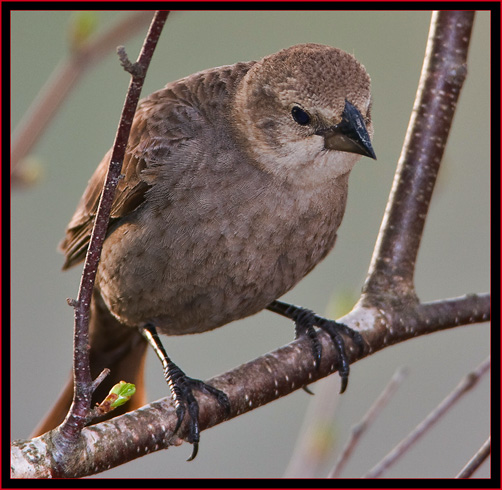
|

|
Resident Northern Harrier keeping an eye on things - Gray, MaineBecause I’m not going to return to this Gray location in this journal I’m going to skip ahead a few weeks to provide an idea of what some of the 'locals' were doing around the ponds... The next image group consists of photographs I took the third week in May. This is actually the last time I conducted a session at this spot - my friend bought a new place and moved away not long afterwards and I was hot on the trail of migrating warblers the balance of the month in other locations providing greater opportunities for this pursuit.I observed this harrier over many days and never experienced the hoped for occasion to photograph it on the side of the wetland where I was set up. After this entry I’m going to skip indicating what shots included a tripod in the system. Any image taken with my 600mm lens was using a support system as I don’t handhold at this focal length. Canon 1Ds Mark III/EF 600mm F/4L lens extended to 840mm, 1/100 second @ f/8, ISO 400 on tripod at long range. |
Canada Goose Goslings - Gray, Maine
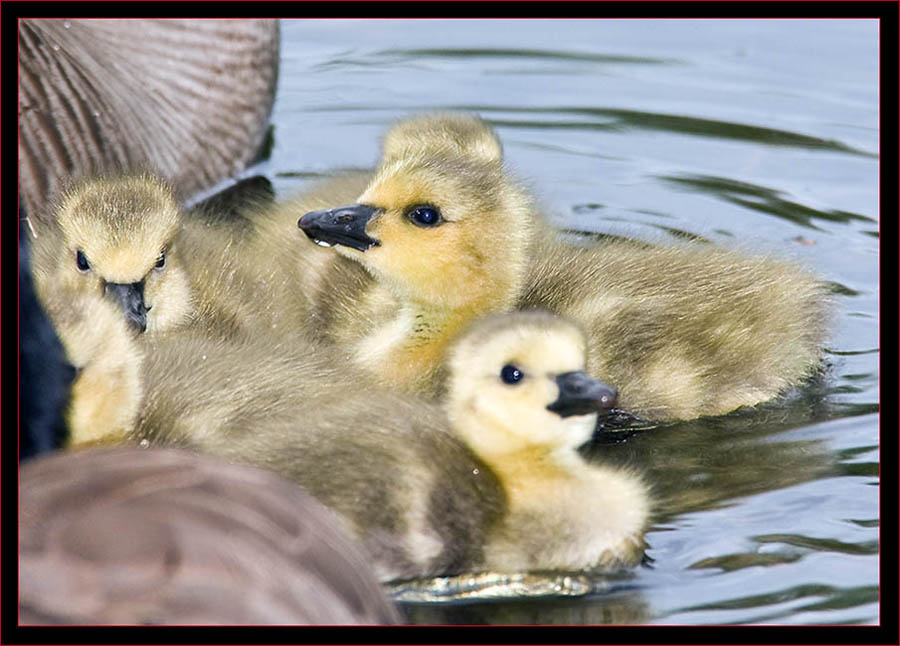
|
Gosling in the waterThe Canada Goose population had expanded and there were several groups with cute little goslings swimming about. My friend learned this is a double-edged sword quickly enough as the adult birds are almost fearless and had no issue with coming into the yard to forage while husbanding the little ones. Having them around proved messy and they made a complete debacle of the grounds surrounding the water. I learned to be well advised about where one stepped around the yard upon my return... Canon 1Ds Mark III/EF 600mm F/4L lens extended to 840mm, 1/60 second @ f/8, ISO 640 with flash |
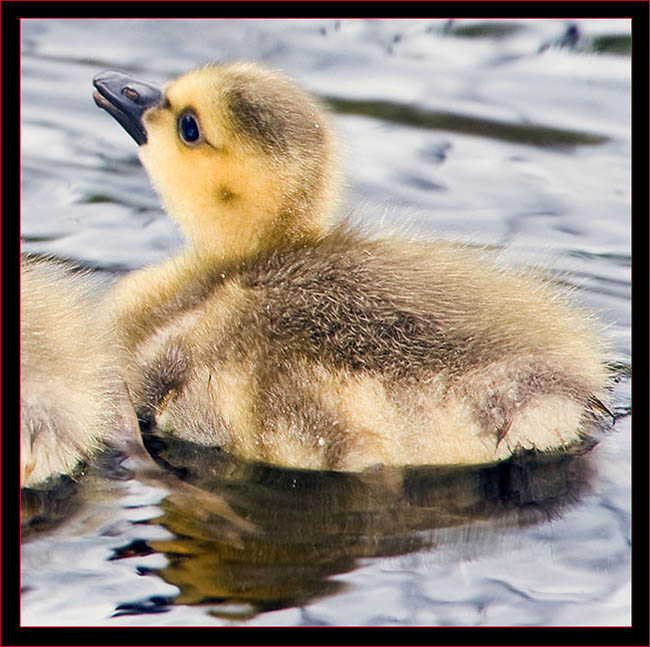
|
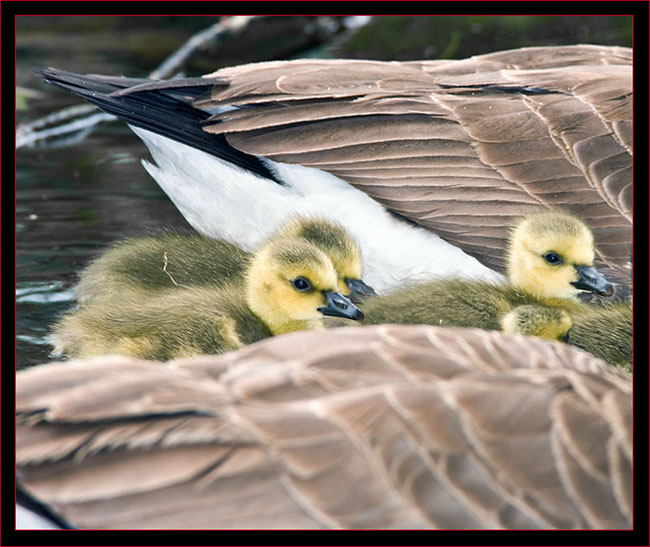
|
Gosling siblings safely tucked into between mom & dad - Gray, Maine |
By now some different birds were making an appearance - Rose-breasted Grosbeak
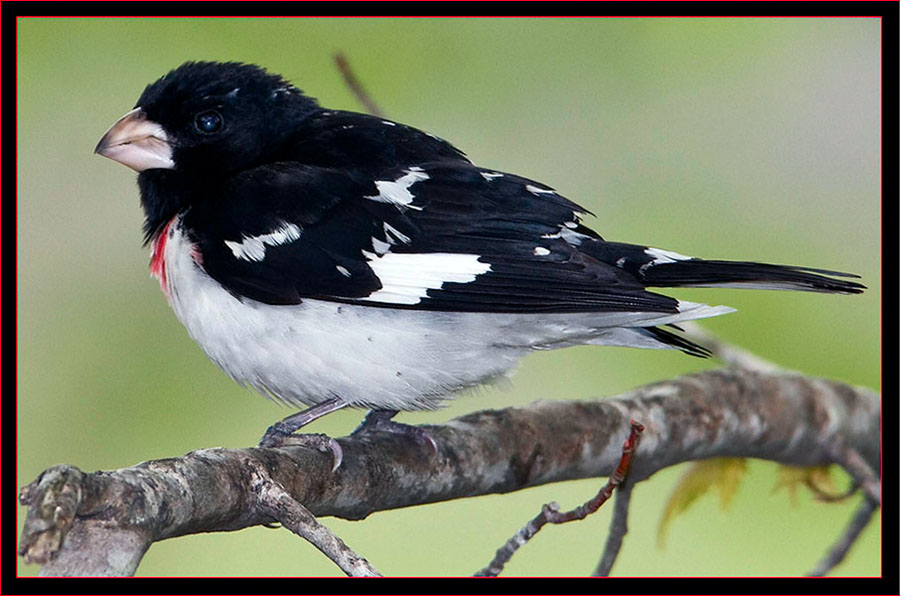
|
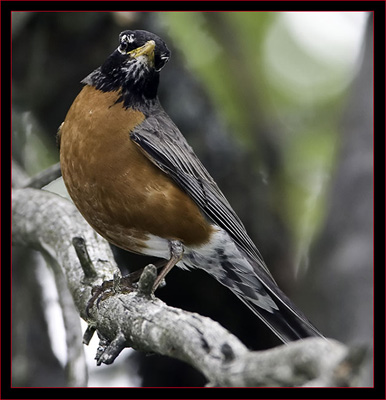
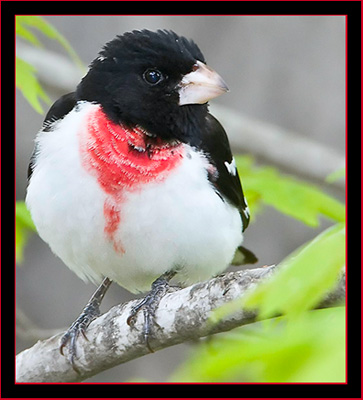
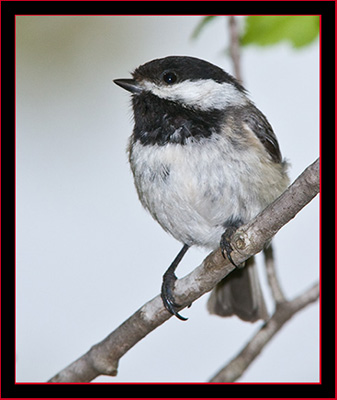
|
A curious Chestnut-sided Warbler stopped by to look me overThis ends the image group I’ll post from Gray... By the second week in May the migration was picking up and I had several locations I knew would be advantageous for seeking warblers once they came in the area. In Portland, Evergreen Cemetery is a Mecca for birders of all levels of expertise when the warblers return. Without question this is indeed a prime spot and one I enjoy... it is advertised quit often in local publications and the Audubon folks actually lead public groups daily over two weeks during this time which is both good and bad. Good because it does much to promote birding and getting folks outside at this wonderful time of year. Not so good because the cemetery is inundated with many people individually & partied with various groups besides the local Audubon chapter from all over the area. This can become an issue for birding and photography. I have learned that it’s nearly impossible to be successful if imaging within or around a group of any significant size so I avoid doing so most of the time although I do enjoy the camaraderie occasionally. Canon 1Ds Mark III/EF 600mm F/4L lens extended to 840mm, 1/60 second @ f/8, ISO 640 with flash |
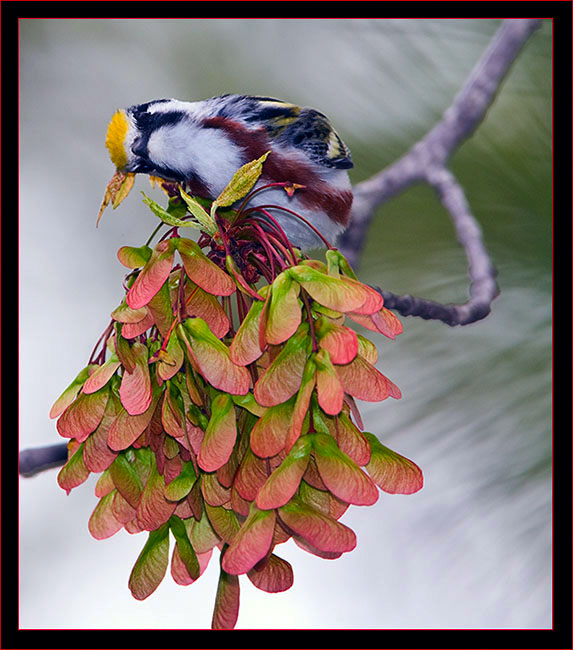
|

|
White-throated Sparrow – I thought this was decent image considering the slow shutter speed.For the next two weeks I planned to be out every morning with my cameras to see what I could find. I also kept my tripod mounted system set up in the backyard often because one never knows what may come through. We’ve never viewed a lot of warblers at our place but we have had the pleasure of migrant visitors passing through stop to enjoy one of the birdbaths, feeders, or just to rest for a time. The next few images were taken in our backyard in Portland. Canon 1Ds Mark III/EF 600mm F/4L lens extended to 840mm, 1/60 second @ f/8, ISO 400 with flash |
A backyard Purple FinchWhen the Canon 5d was my primary camera I normally tried to shoot at no greater than 400 ISO as I believed this was the best compromise between shutter speed and signal noise introduced into the image. I’ve revised this line of thought some since using the 1Ds and view the quest for shutter speed to avoid motion blur as more of a prerequisite in bird imaging. There’s no steadfast rule however, the site and lighting conditions often dictate what’s required and sometimes you may have to compromise to get the shot. I utilize the histogram read out often – one of the premier advantages of digital capture and use exposure compensation to shoot ‘right adjusted’ to the point of not blowing out the highlights. Just remember to check your histogram if you change f stops or make other adjustments that will affect light striking the sensor. I’ll shoot with the 1Ds at the maximum of 3200 ISO (a setting in the custom function menu is required for this) without an issue and have done so on more than one occasion. Canon 1Ds Mark III/EF 600mm F/4L lens extended to 840mm, 1/400 second @ f/8, ISO 640 with flash |

|

|
I believe shooting on a tripod is a key component to obtaining razor sharp images. This doesn’t mean you cannot obtain a sharp image handheld but the chances of success are enhanced with a tripod
and you can shoot much slower than the handheld ‘rule of thumb’, 1/lens focal length. As an example, if you’re employing a 400mm lens, you should strive to achieve a shutter speed of 1/400th or faster. With
longer lenses like the 500 or 600 f/4 or faster, handholding isn’t a true consideration anyway; the weight of the lens and camera will be such that you’ll need some type of support system for
stability. I know guys that would prefer to handhold due to the freedom of movement this allows when panning or seeking subjects. I have the best of both worlds – I use my 600 lens tripod
mounted and carry a second camera on a shoulder strap for panning or wing shots when my primary system isn’t practicable for the shot. Setting the tripod down and lifting the handheld camera to the shoot position can be accomplished in seconds.
There have been times when my handheld system
was used for the bulk of the images in a session but I would comment that nearly 100% of the time I didn’t have my long lens and tripod along I’ve regretted it. I’ve received plenty of stares
and comments like, ‘Are you really going to carry that? How much does that weigh?’ from folks when passing by or when joining/meeting birding groups on the trail...
One of our many backyard 'golden boys' - American Goldfinch |
Reviewing the previous paragraphs I believe I should point out a bit more about my settings. I almost always image birds with exposure control in Aperture Priority (the Av designation on your camera = Aperture value).
I suspect most bird photographers do also but I’m not certain on this. I believe Av allows better control over depth of field and by changing the f stop you have automatic control over shutter speed which is
simple to monitor through the viewfinder. A good birding lens should perform well when shot wide open at the largest aperture although the depth of field is improved when the lens is ‘stopped down’ one or two stops. An f/2.8 or f/4 lens at
500 or 600 millimeters is a significant investment and the ability to shoot at these f stops is what you’re paying for.
Photography in early morning, low-light conditions is quite common when seeking birds and you need to be prepared for this. Often my handheld system at 400mm simply can’t be used in these conditions due to slow shutter speeds – then
it’s all about the tripod. In my case I usually don’t shoot below f/5.6 because my handheld 400mm lens is an f/5.6 lens wide open and the 600 f/4L becomes a f/5.6 lens when used with the 1.4X extender – you lose a stop of light; add a
2X extended and you lose two stops. I rarely shoot the 600mm lens at f/4 simply because I prefer the larger image scale when employing an extender & you can see from my photograph descriptions
I often use smaller aperture openings – f/8 to f/16 for example, for greater depth of field when lighting conditions permit. These days I nearly always use evaluate mode for exposure metering. Formerly I used spot metering
frequently and still do on occasion but generally don’t bother to change out of evaluate mode which I’ve been satisfied with.
A backyard Chipping Sparrow |

|
White-crowned Sparrow posing

|

|
I commenced my migration immersion at Evergreen Cemetery at the end of the first full week in May; over the coming weeks visited this site nine or ten times. Some of these trips were
nearly day long, others just over a few hours. At times I’d investigate multiple sites in a day to offer a bit of variety or on slow days to learn if something new could be found elsewhere. This
is a lot of work actually... getting prepared & out of the house with the sunrise and spending time each night reviewing, evaluating & enhancing the many image files. I tried to keep up with
enhancing and keeping the session files organized as the days ran together. I’ve learned the last thing you want to do is shoot often over an extended period and then be faced with a major group
of shots to evaluate after the fact. Of course one could take as much time as necessary and put this off but that’s not how I go about the task – it’s better to evaluate the images while
everything is fresh in your mind and current. I can amaze my friends at times because I can recall where each photograph was taken long after the fact. And I have thousands and thousands of archived images.
A near daily view at Evergreen, a Solitary Sandpiper |
|
The first week the quantity of warblers wasn’t what I’d hoped and I gathered that many birders found the slow progression disappointing. It’s always best to be in a target
rich environment but that’s one of the joys of birding – you just never know what you may find. I did notice that two warblers appeared to be moving in well - the Northern Parula and Chestnut-sided Warbler.
I took multiple shots of these beautiful birds as I viewed them.
Shooting with flash… I have learned that using a flash for birds & warblers in paticular is an important consideration. This adds one more level of consideration in the field but I believe it goes far in producing a better than average image when compared to an okay digital capture. Flash makes a bird’s colors pop and with colorful specimens like warblers this is definitely a plus. I have several Canon flashes but mostly use the 580EX Speedlight. Mine is the older version as they now have the 580EX II, which came out several months after I purchased the unit – this figures right? One improvement on the 580EX II is that when used mounted in the hot shoe of a Mark III body it forms a weather tight seal. This wouldn’t aid my efforts particularly as I always use my flash mounted off the camera. However I’m pleased with mine and can certainly add the newer version as they aren’t all that costly compared too many things photographic. A Northern Parula at Evergreen Cemetery |

|
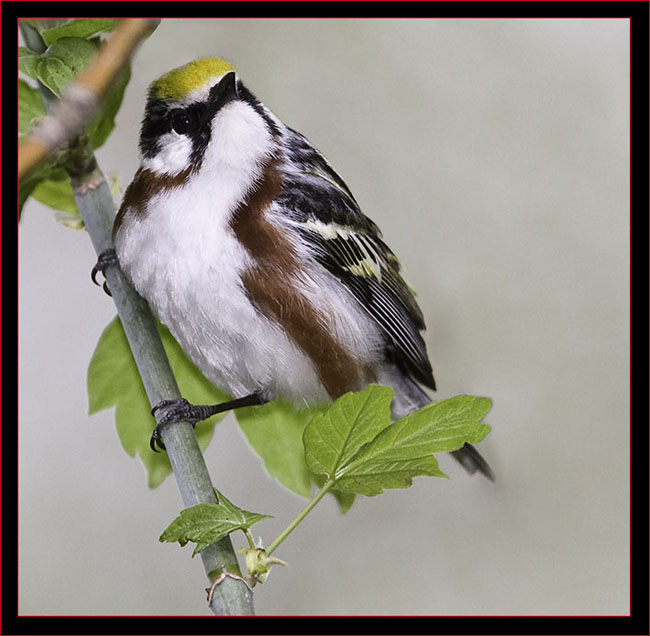
|
One of my favorite shots of a Chestnut-sided WarblerCanon 1Ds Mark III/EF 600mm F/4L lens extended to 840mm, 1/320 second @ f/8, ISO 640 with flash I observed many more Chestnut-sided Warblers this year that in the last few. This was okay with me as they are beautiful indeed. I don’t wish to be too redundant as I photographed many examples of the same species over a period of days. I do wish to post some of my favorites so will move this account along with a sampling. I’d been criticized in earlier years about over saturating my images to boost coloration. It didn’t matter whether I agreed with the comments or not, that’s just how it was. Please look at the image at left – there is no saturation boost in this photograph – the coloration came through splendidly with the use of flash…I employ a Wimberley bracket to get the flash off the camera to avoid ‘steel eye’ issues, the nature equivalent to red eye I guess you could say. With this you require a flash extension cord to communicate with the camera; I use the Promaster Flash Extension Cord/Off Camera TTL unit version purchased from Artie Morris at Birds as Art. I also use a Better Beamer flash extender as this broadcasts the concentrated light the distance you’ll require for this endeavor. I start by setting my flash at the – 1 (minus one) setting and then make adjustments as required from that point. It’s not difficult because you can use exposure compensation, the on board flash setting and your histogram as a guide until satisfied with the read out. |
A Northern Parula - you can see how using flash can enhance coloration...

|
A birder on the trail had walked by my tripod set up and after a few minutes returned to inform me that they’d spotted an Ovenbird not far from my location. I
thought this was kind of her as she asked if I’d like to attempt to photograph it.
A Ovenbird along the trail - not an easy shot in the woods and on the groundCanon 1Ds Mark III/EF 600mm F/4L lens extended to 840mm, 1/160 second @ f/8, ISO 640 with flash |

|
Least Flycatcher, Chestnut-sided Warbler & Northern Parula



|



|

|
One of my favorite birds, a Yellow Warbler... These birds can be almost comical and are fun to observe/photograph.Canon 1Ds Mark III/EF 600mm F/4L lens extended to 840mm, 1/100 second @ f/8, ISO 640 with flash |
There was one spot near a pond inhabited by this male American Redstart.

|

|
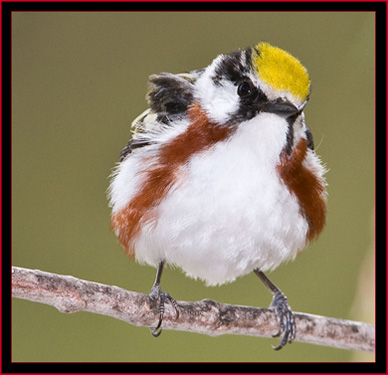
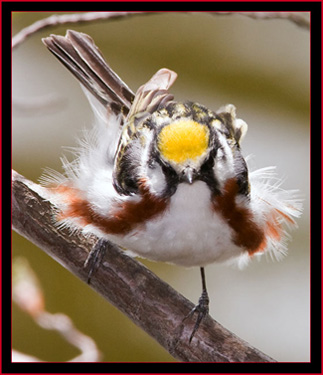
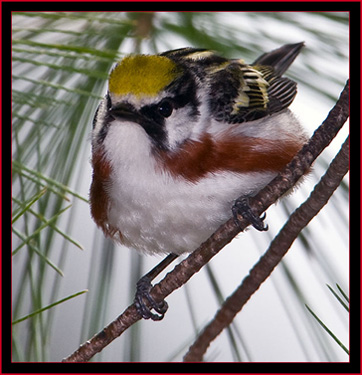
|
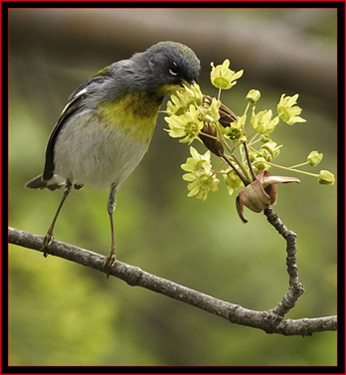
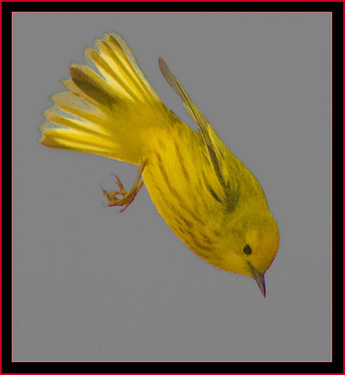
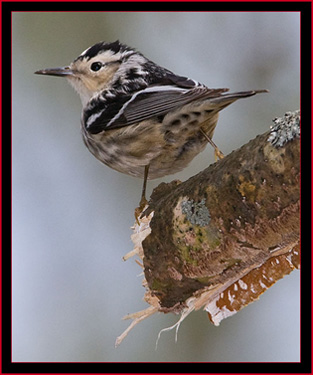
|
A Common Yellowthroat photographed at Evergreen CemeteryCanon 1Ds Mark III/EF 600mm F/4L lens extended to 840mm, 1/160 second @ f/9, ISO 640 with flash |
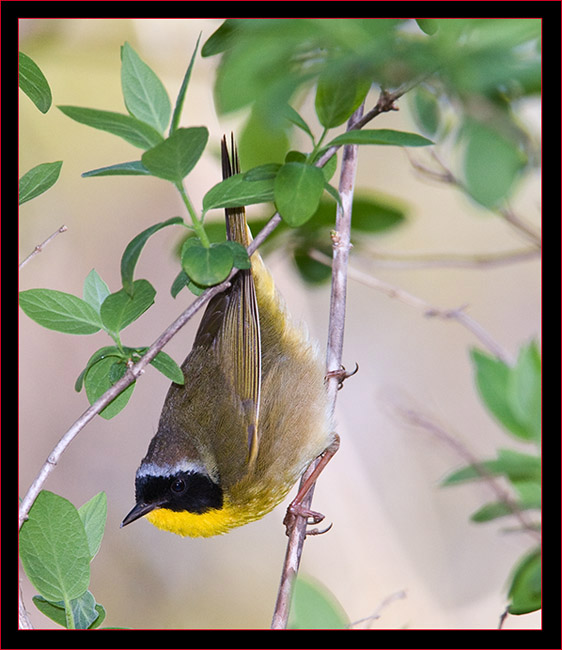
|
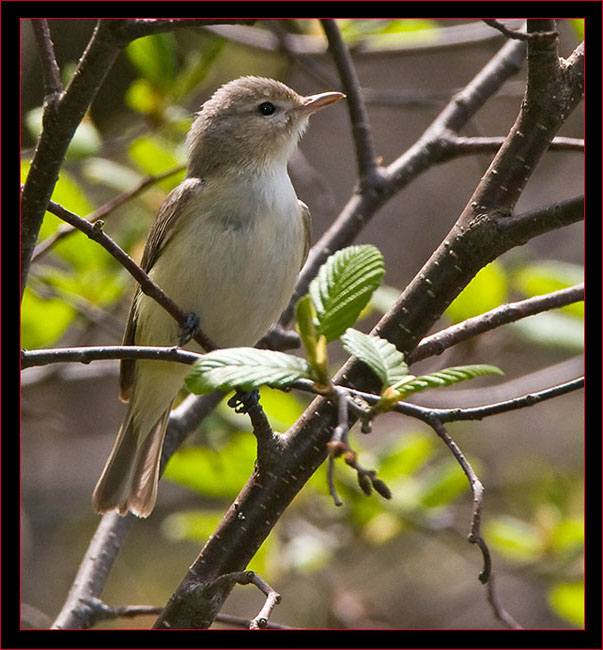
|
A new bird added to my Index this May was this Warbling Vireo. I wasn’t quite certain what species this was when I first photographed it at a distance.Canon 1Ds Mark III/EF 600mm F/4L lens extended to 840mm, 1/400 second @ f/10, ISO 640 with flash |
I was pleased to add some new images of this Nashville Warbler to my website and archiveCanon 1Ds Mark III/EF 600mm F/4L lens extended to 840mm, 1/250 second @ f/8, ISO 640 with flash |
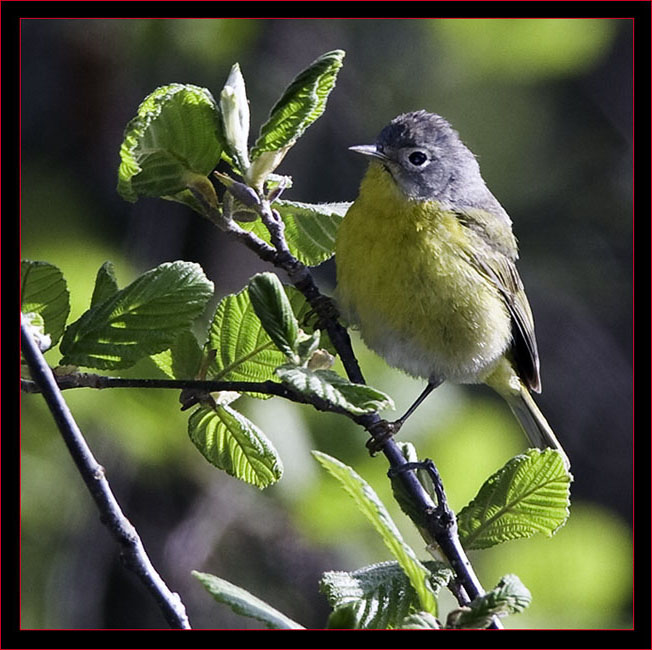
|
A Magnolia Warbler at Evergreen Cemetery
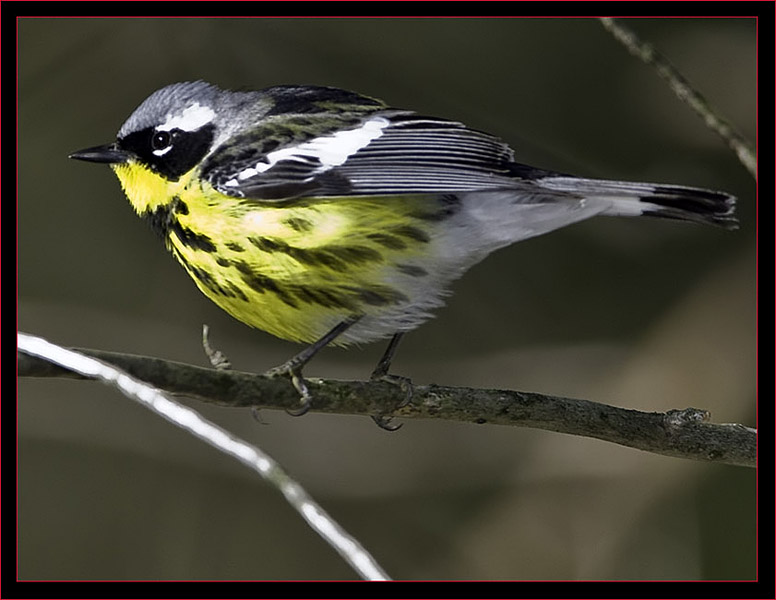
|
Magnolia Warbler sequence views
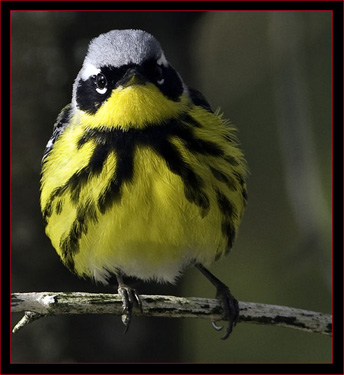
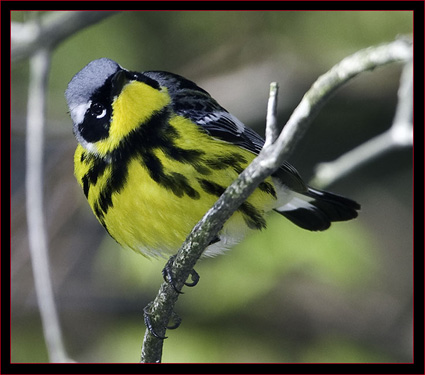
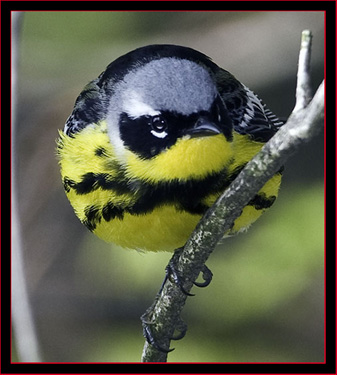
|
By now the always attractive Palm Warblers were in the area and active.Canon 1Ds Mark III/EF 600mm F/4L lens extended to 840mm, 1/200 second @ f/8, ISO 640 with flash |
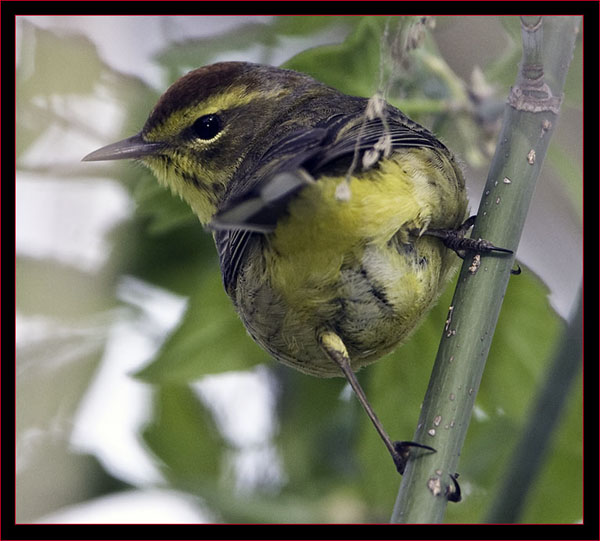
|
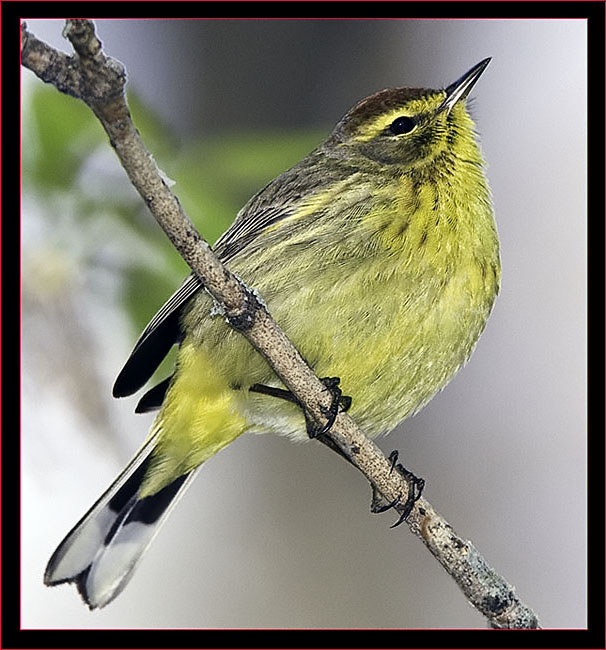
|
Another view of a Palm Warbler at Evergreen Cemetery and one of my favorite images from the dayCanon 1Ds Mark III/EF 600mm F/4L lens extended to 840mm, 1/400 second @ f/8, ISO 640 with flash |
An old turtle sunning...
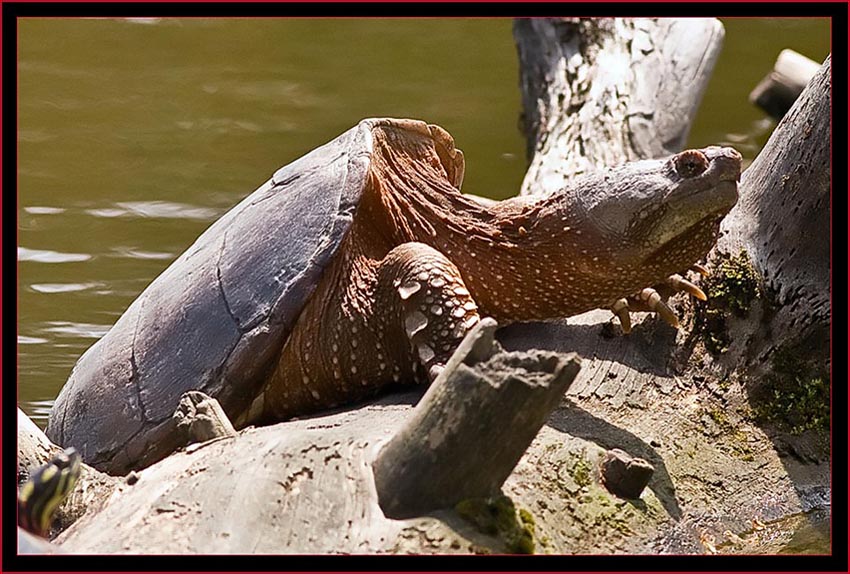
|
An American Redstart, American Crow & Yellow-rumped Warbler view
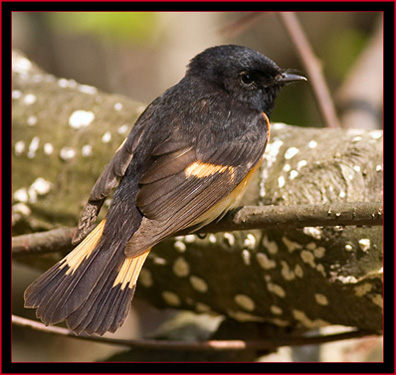

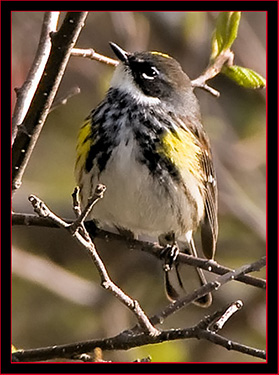
|
Another one of my favorite shots from the day is this Northern Parula with attitude...
|
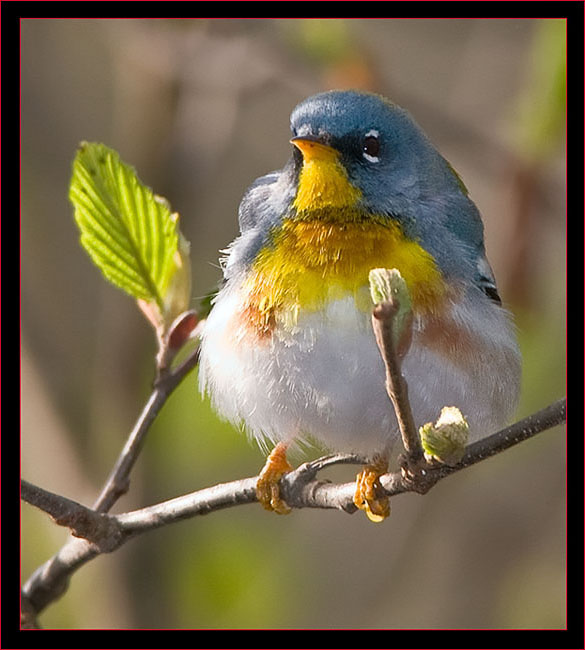
|
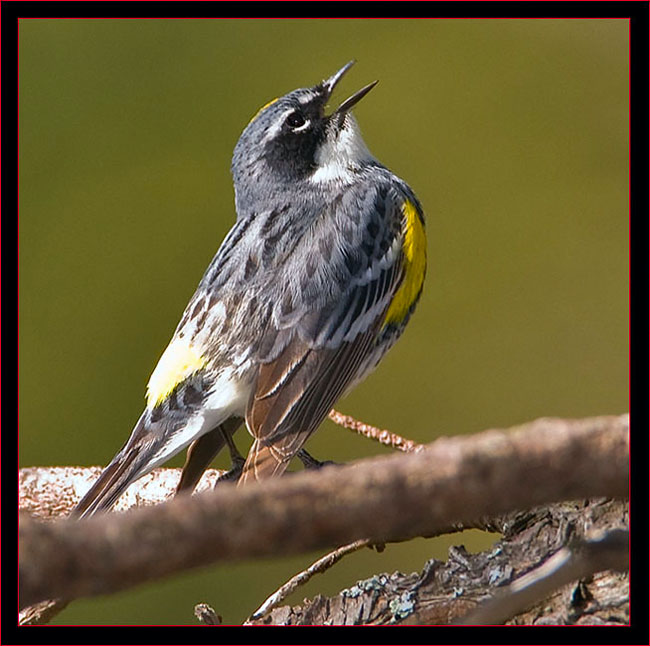
|
Yellow-rumped Warbler singingI sometimes smile when thinking about Yellow-rumped Warblers because while in the Savannah area I was told these are considered the ‘trash birds’ of Georgia. I understood this comment while birding on Skidaway Island... In winter months every other bird was a Yellow-rumped. If something were to fly by that you didn’t get a good look at it was probably one of these. I must admit they are beautiful in breeding plumage however. Canon 1Ds Mark III/EF 600mm F/4L lens extended to 840mm, 1/200 second @ f/8, ISO 640 with flash |
A Black-throated Green Warbler up high at 400 millimeters ...Canon 5d/EF 400mm F/5.6L lens, 1/1000 second @ f/7.1, ISO 640You may notice looking at the camera data that most of the shots during this period were taken with my tripod system and the 1Ds camera. The shot at right was obtained with my handheld system which was always at the ready. Seeking warblers with a camera is problematic because they are rarely immobile and remain in constant motion as they forage and flit about. Obtaining an image of one is exacerbated because they generally stay high in the trees so you have lighting and impediment issues as well to overcome. Many respectable bird images were deleted due to obstructions ruining the shot. I can remove these hindrances in Photoshop as well as they next photographer probably but generally do not. Often twigs and branches add to the setting in my view because that is how you see these subjects in the field naked eye, with binoculars or through the lens. Where I rarely employ a predetermined shoot zone and don't draw the birds in by phishing with an audio device, the images communicate the natural setting where the birds were observed. |

|
Yellow-rumped Warblers bordering a Black-throated Green Warbler
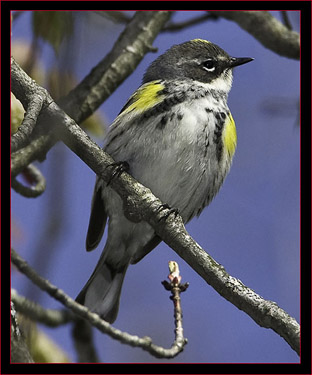
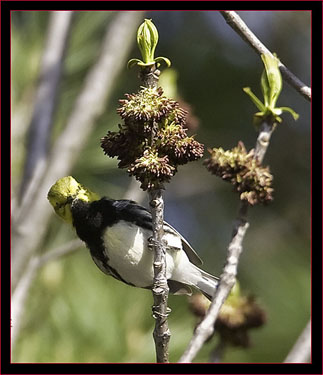
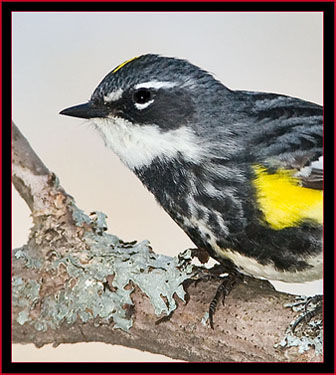
|
Nashville Warblers bordering a Black & White Warbler
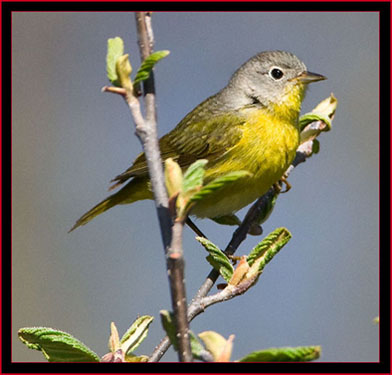
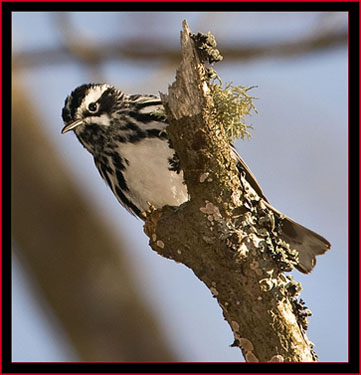
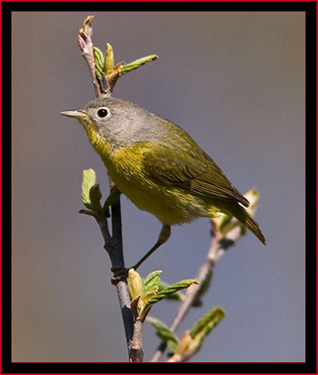
|
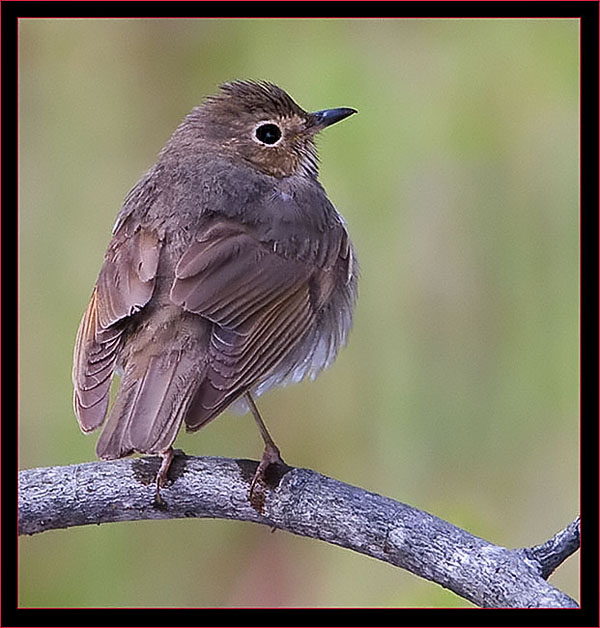
|
A Swainson's Thrush at Evegreen CemeteryThe next group of images was taken on May 15th, the sixth day I’d visited Evergreen Cemetery – I was getting to know the place fairly well... I didn’t walk to all the places birders check at this site each day but much was dependent on the activity level one found in the field. There’s a low area off one of the gravel roadways that was more or less a pond this time of year. This is an area check frequently by birders but most don’t hike into the woods around the water as there’s no actual path and it is wet. I was hiking with my tripod when several Ovenbirds were spotted in the trees across the water so I decided to learn if I could get closer and possibly obtain an exposure or two. It proved worth the effort as I was able to isolate one of them as the bird broke cover and perched in a tree as can be viewed here. A Blackburnian Warbler was also spotted high in the trees at this location, the first I’d viewed this season. I could not get a clear line of sight or obtain a focus lock on this bird as it moved among the branches even though I followed it through the lens for the duration it remained visible. Canon 1Ds Mark III/EF 600mm F/4L lens extended to 840mm, 1/200 second @ f/7.1, ISO 640 with flash |
A perched Black-throated Blue Warbler ...Canon 5d/EF 400mm F/5.6L lens, 1/1000 second @ f/7.1, ISO 640While in the same area I was really pleased to see a pair of Black-throated Blue Warblers a bit further back in the woods. This was the first opportunity I had to photograph this warbler and I was anticipating doing so. Advancing as much as possible to close the distance for a shot, I remained still and watched the birds for a time. Being in the woods there were many obstructions between the subjects and my lens but eventually one of the pair broke cover and got high enough to obtain a more or less clear shot from my observation point. |
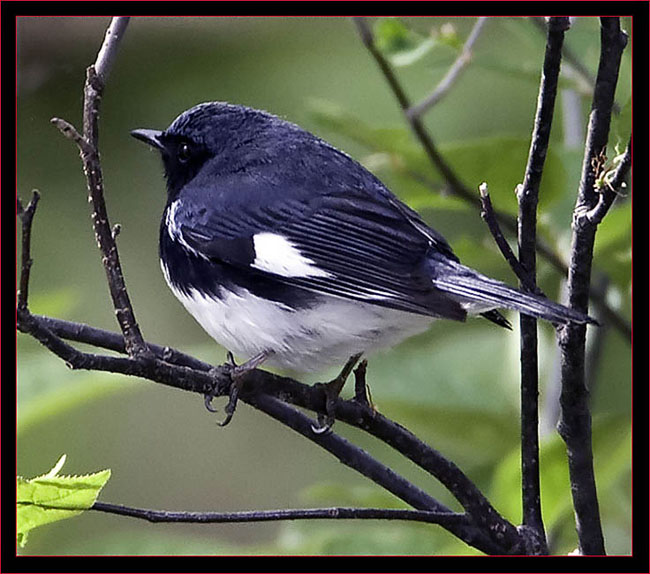
|
An overhead female American Redstart
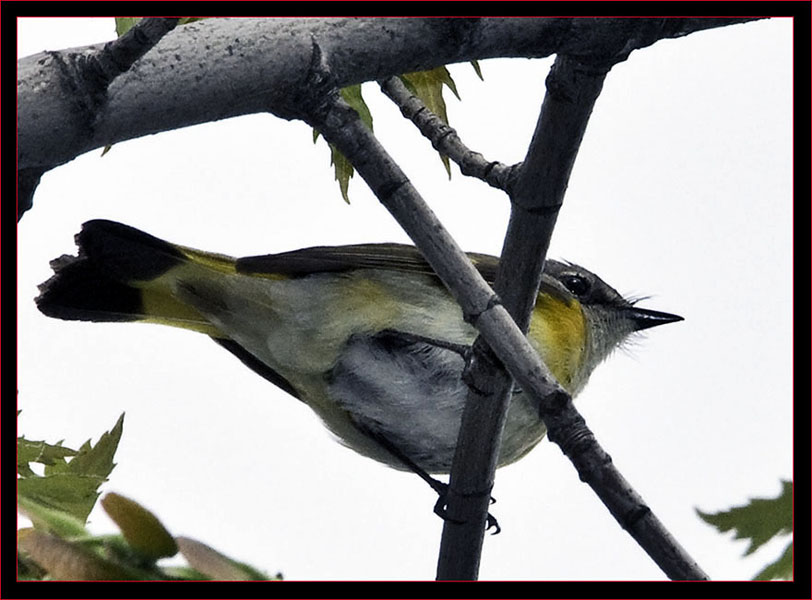
|
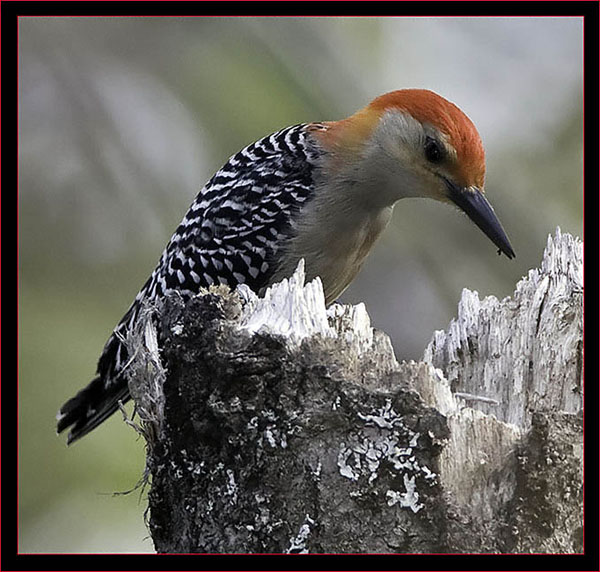
|
A Red-bellied Woodpecker - a rare sighting in MaineAn unusual sighting I would deem rare on this morning included this Red-bellied Woodpecker. This generated quite a bit of excitement to the birders in the area at the time and I recall a discussion about the identification. I knew what it was as these are common in Georgia – I’d never viewed one in Maine previously however - and I’d observed and photographed multiple examples of this fine looking bird. After I took this image the specimen flew off to parts unknown and I told several ladies discussing the sighting I’d obtained a decent shot of it and could make a positive identification later at the computer. Most birders take sighting notes and the species count is both interesting and informative in creating life listings and documenting the sightings by date and location. I do this as well but my documentation is created with my cameras and lenses... |
A perched Northern Flicker ...Canon 1Ds Mark III/EF 600mm F/4L lens extended to 840mm, 1/250 second @ f/14, ISO 640 with flashAnother woodpecker we spotted this day was this Northern Flicker, a much more common species in our area. A group of four flickers were spotted high in a tree and through the lens I could see they were fine & colorful examples of this bird. I took a series of shots but most of the exposures had obstruction issues. The image viewed here was the best of the group. |
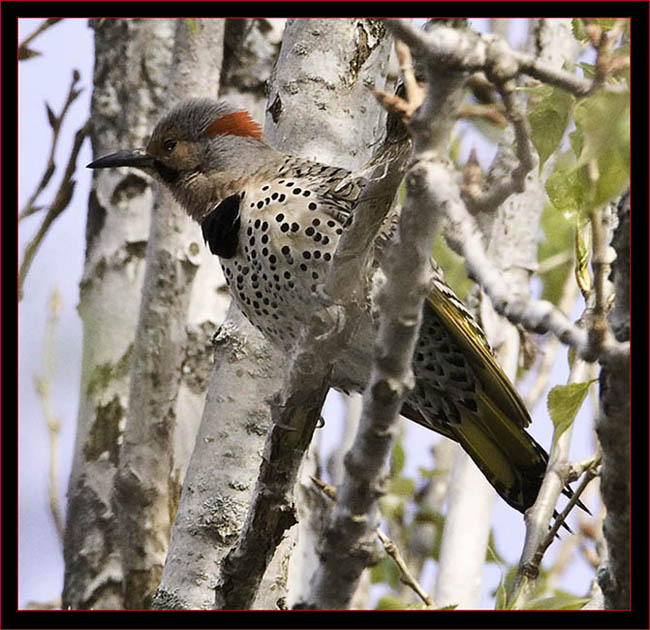
|
Another woodpecker - this time a Downy, Yellow Warbler singing & a Song Sparrow
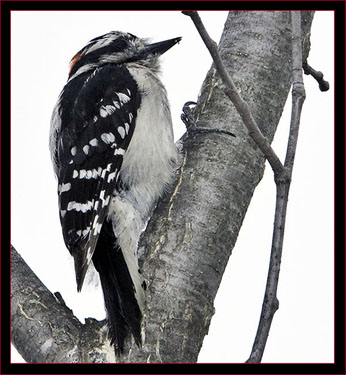
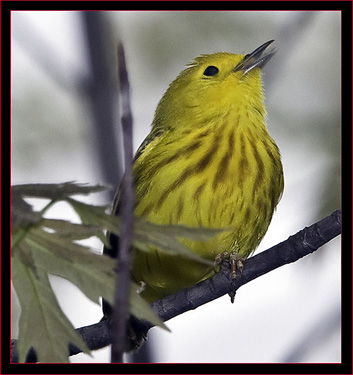
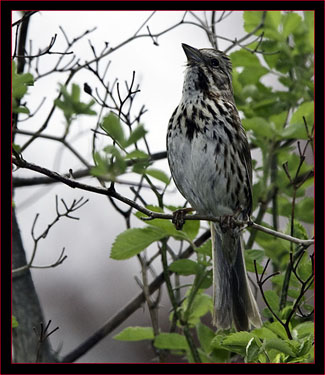
|
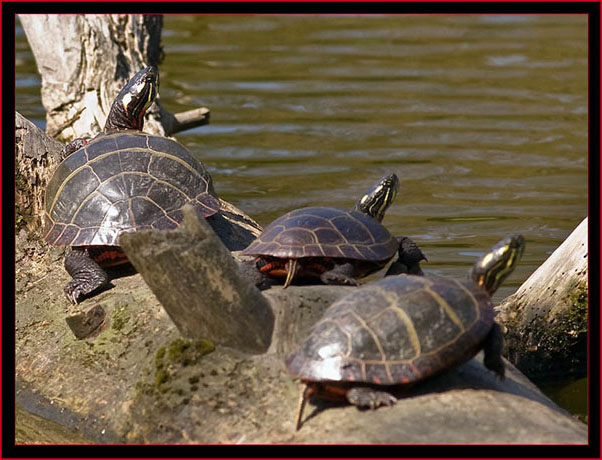
|
A handheld photograph of turtles sunning on a log - Evergreen CemeteryI’d been to this location enough that I was thinking about investigating some new places to image. Evergreen Cemetery isn’t far from my home location and was convenient to visit during the migration so I knew I’d return; it was simply time to make a change for a few days. I was also working to a plan... |
A Change of Venue & More Birds...
A Black-crowned Night Heron located not far from my office near downtown PortlandI’d been thinking about getting a birding expert to serve as an escort for a few sessions for a change of pace. There was never any doubt about who this may be, so I contacted ‘The Master’, Derek Lovitch of the Wild Bird Center of Yarmouth to learn if he had any time available. His guide service is structured on half and full days and has to be scheduled as he and Jeannette need to staff the store among other activities they are involved with. Derek is a font of birding information and I knew I was in for an interesting and productive time. We discussed the outing in general terms as I wasn’t seeking any particular species although I’m always interested in adding new digital captures to my Bird Photography Index. I’d intended Linda and me to join Derek so she could get an imaging session in as well but this didn’t work out so I followed through without her. We stayed in the Portland area and investigated several hot spots that I found intriguing. |
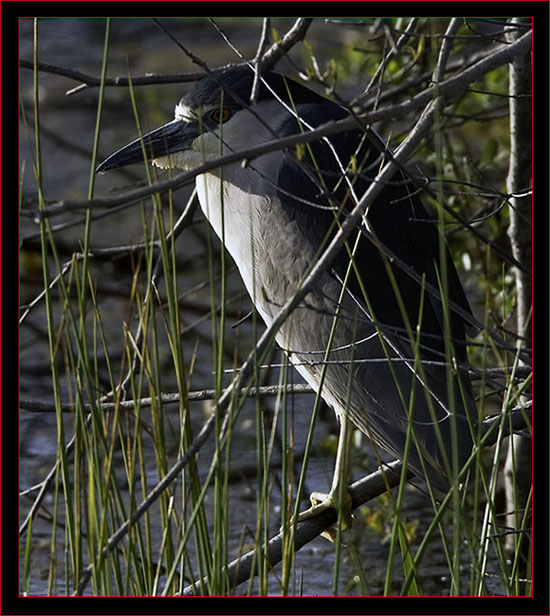
|
A Yellow Warbler near a small pond
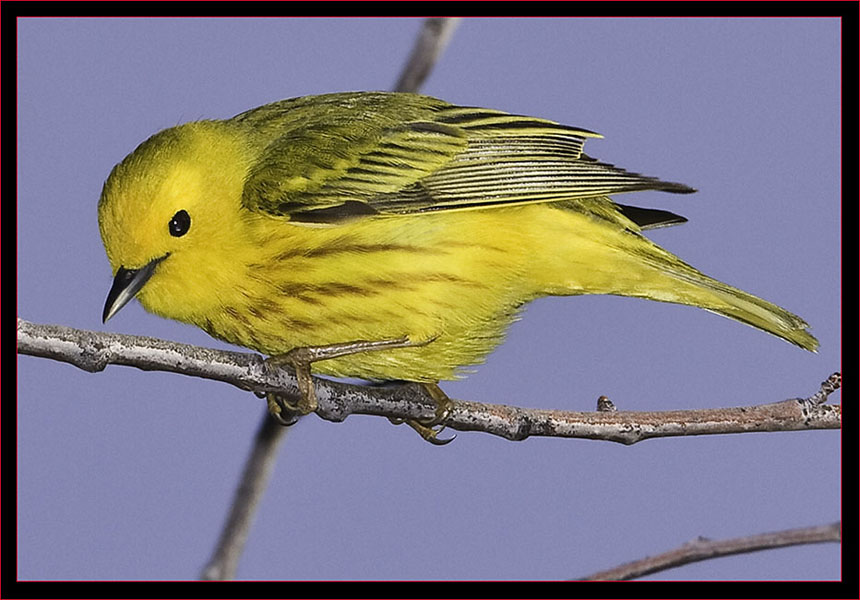
|
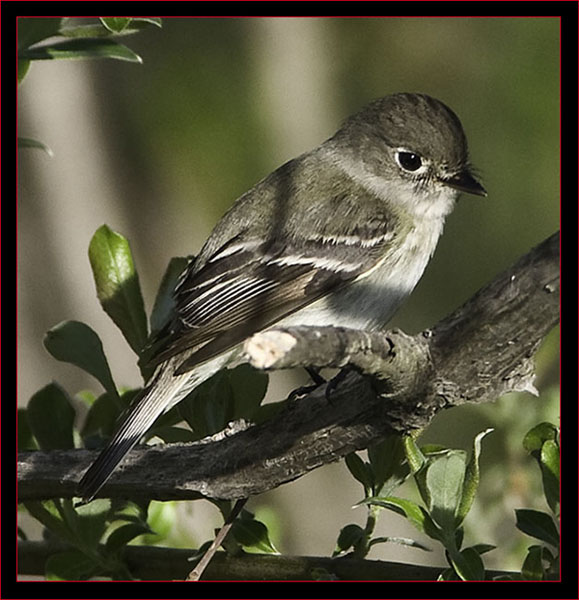
|
A morning photograph of a Least FlycatcherDerek and I investigated several sites in Portland ending up along the walking path on the Western Promenade. It never would have occurred to me to inspect this area to learn what may be around. It wasn’t especially active or productive but I found it a learning experience all the same. Plus we obtained a terrific view of Mount Washington, still snow covered in portions at mid-May. I’ll select a small group of shots from the many taken this day and include them here. Canon 1Ds Mark III/EF 600mm F/4L lens extended to 840mm, 1/400 second @ f/8, ISO 640 |
Savannah Sparrow views
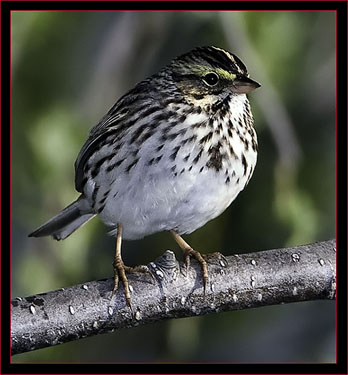
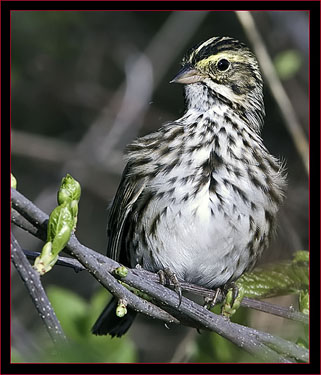
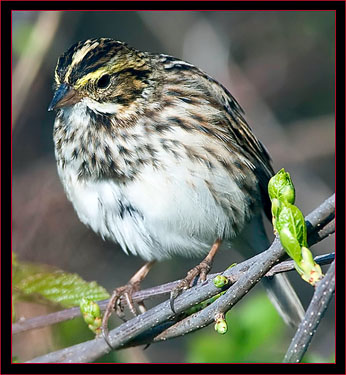
|
Distant Mount Washington - 840mm at f/22
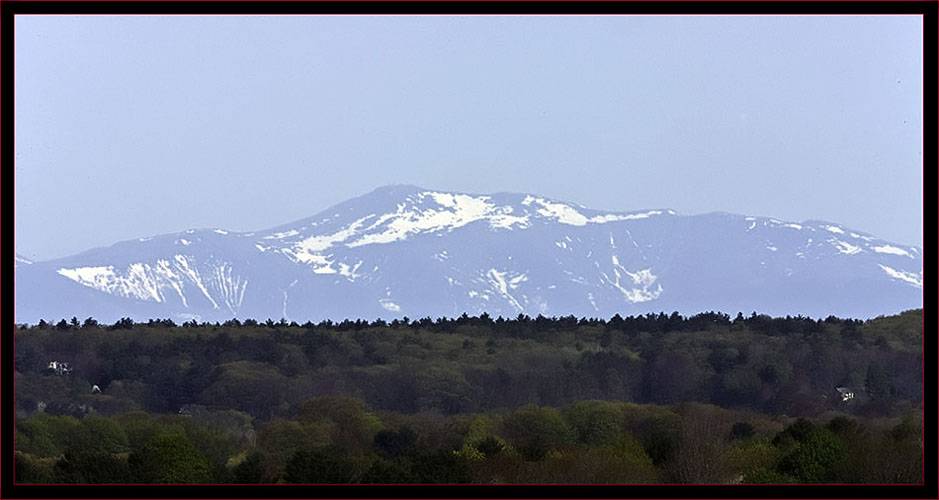
|
Warbler song... Black & White Warblers bordering a Yellow Wabler
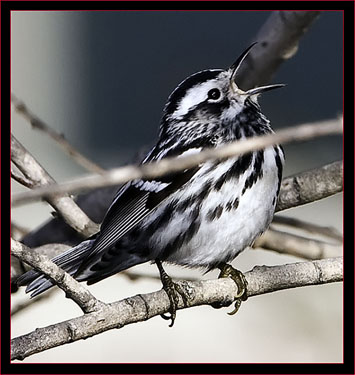
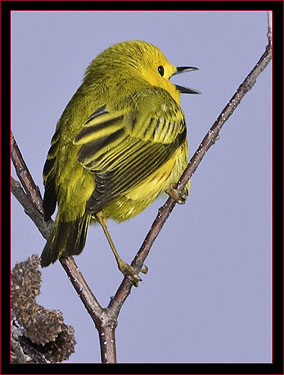
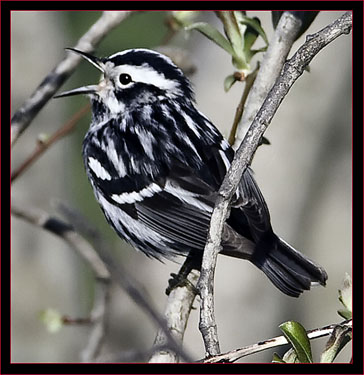
|
A Common Grackle & Northern Cardinal at the Western Prom
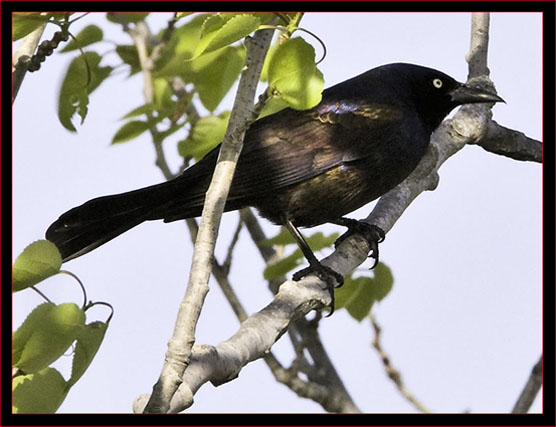
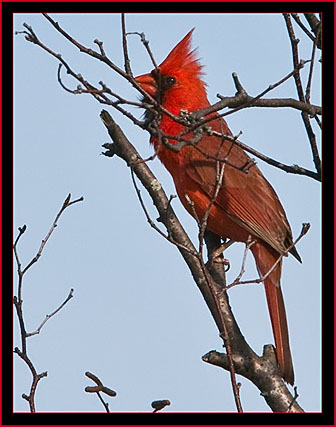
|
The Woodchuck (or Groundhog) is one of the best known wild mammals but few realize this rodent is a member of the squirrel family.We decided to drive over to Scarborough Marsh, one of the premier birding spots in our area. But first Derek had one more place he wished to investigate. We drove across the Casco Bay Bridge and into South Portland to check out a pond site that was no longer a pond... It had been long filled in but much of the landscape looked kind of the same and the low areas were swampy drawing in birds. |
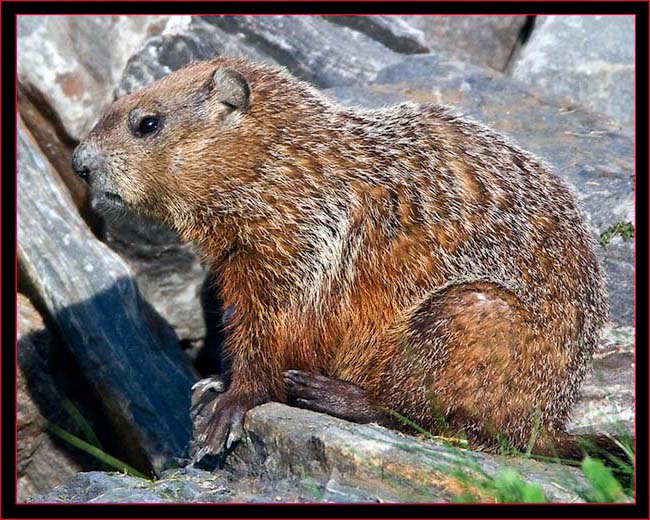
|
Rose-breasted Grosbeak views
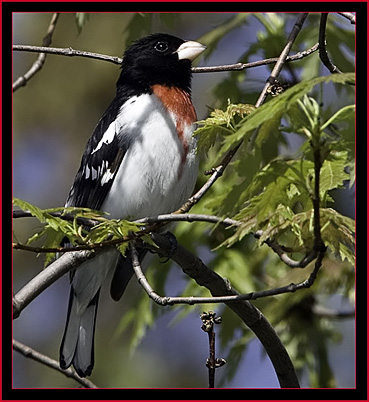
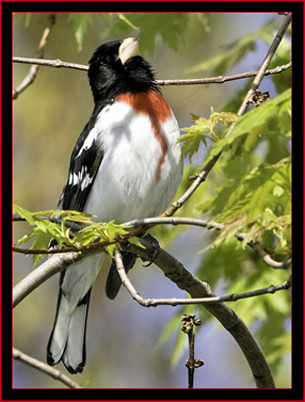
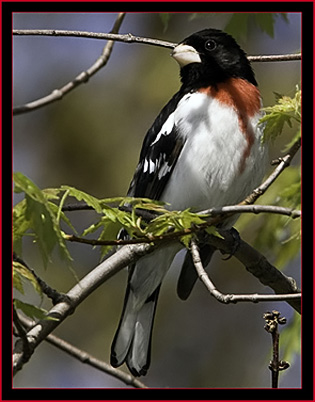
|
Scarborough Marsh
Passing through - a train bordering the marsh
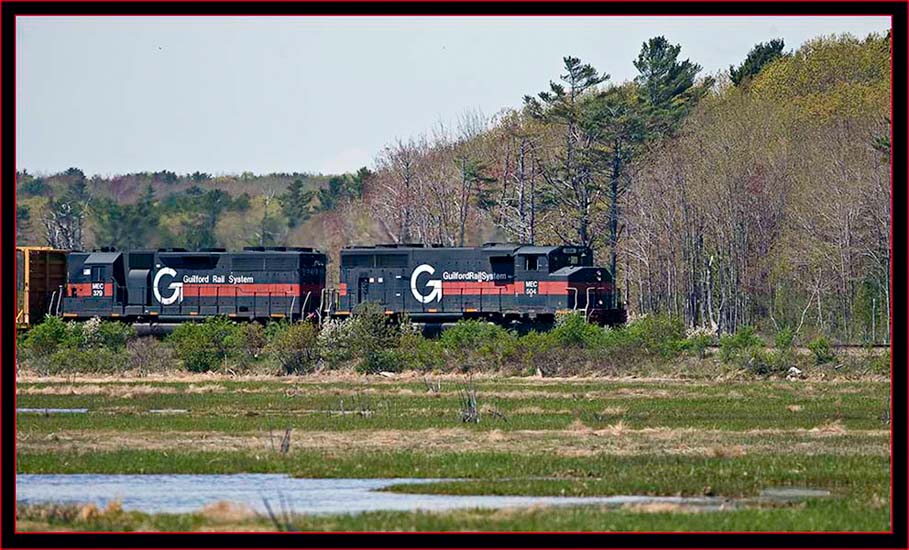
|

|
American Black Duck & Mallard landingDerek and I completed our day at Scarborough Marsh and we checked this area for the usual waders, shorebirds plus warblers and other migrants. Clearly one of the best places in our area to seek out birds and other wildlife, this marsh is a treasure enjoyed by many. It’s also near coastal areas that offer different species of birds so one can spend the day in multi-faceted environments. Canon 5d/EF 70~200 IS lens @200mm, 1/2000 second @ f/9, ISO 400 |
A Glossy Ibis foraging in the marsh.Besides the time with Derek, I visited Scarborough Marsh on my own on several occasions and once with Linda. I’m going to group these visits photographically in this section with shots taken over three or four days. Canon 1Ds Mark III/EF 600mm F/4L lens extended to 840mm, 1/800 second @ f/8, ISO 640
|
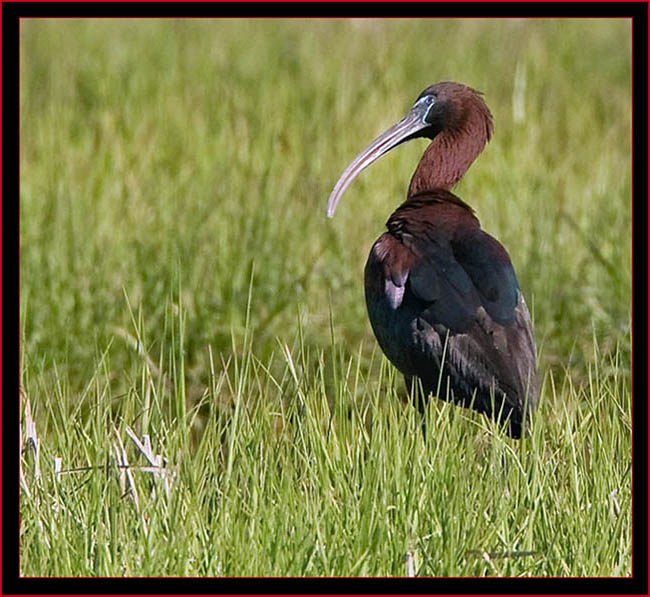
|

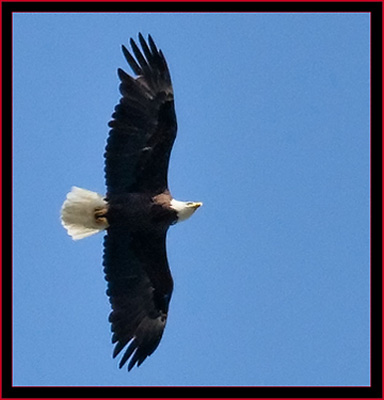

|
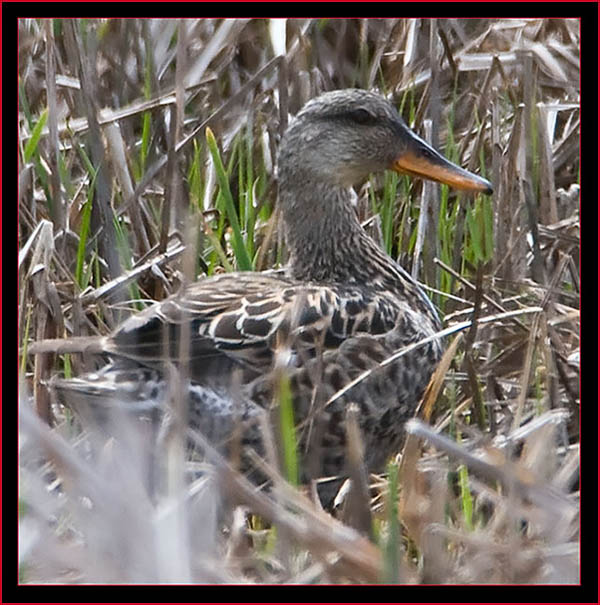
|
A Gadwall - a new species for my IndexCanon 1Ds Mark III/EF 600mm F/4L lens extended to 840mm, 1/250 second @ f/14, ISO 640 with flash A quick example - I’d mentioned previously how difficult it can be to obtain good images in trees and wooded areas due to obstructions. By this time in May the trees were filling out and leaves were becoming a major issue. There’s a wooded area bordering the marsh that is an excellent migrant stopover. I spent a lot of time in this section while at this site. However, the woods and trees are thick and filled out. You can walk the vegetation constricted trails to get around but shooting from the trails into the trees and brush allows few places to obtain a usable line of sight to the subject. The shot below is similar to what you’d like to acquire in such a target rich environment... |
The ideal - an acceptable Magnolia Warbler view- Canon 1Ds Mark III/EF 600mm F/4L lens extended to 840mm, 1/250 second @ f/20, ISO 640 with flash
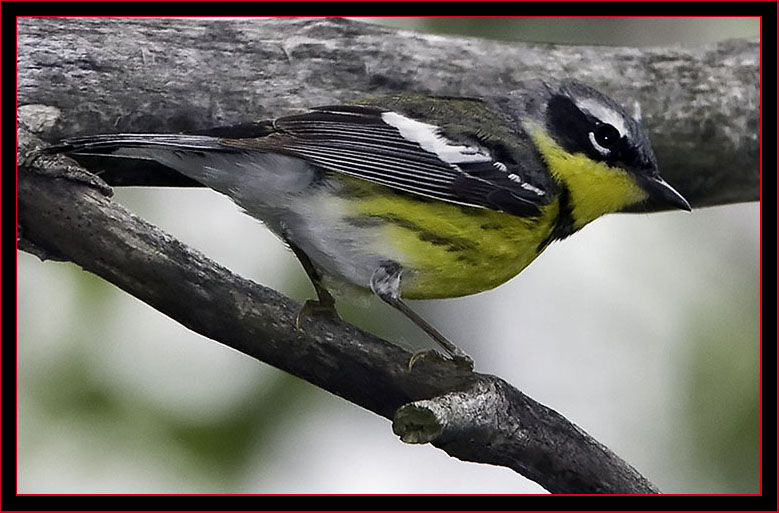
|
The reality... This shot demonstrates a more accurate view through the lens when seeking warblersThis image is much more typical of what you’d see this time of year. Same species but deeper in the foliage... This doesn’t stop one from observing birds but can really put a damper on photography... I guess it’s one of those things you do because you enjoy it and accept the challenges... I like this image and find it remarkable that focus could be achieved with so much obstruction between the lens and subject. One must give all due credit to the Canon autofocus system. Except for the leaves impeding the view the detail on the warbler is outstanding. Canon 1Ds Mark III/EF 600mm F/4L lens extended to 840mm, 1/250 second @ f/11, ISO 640 with flash
|
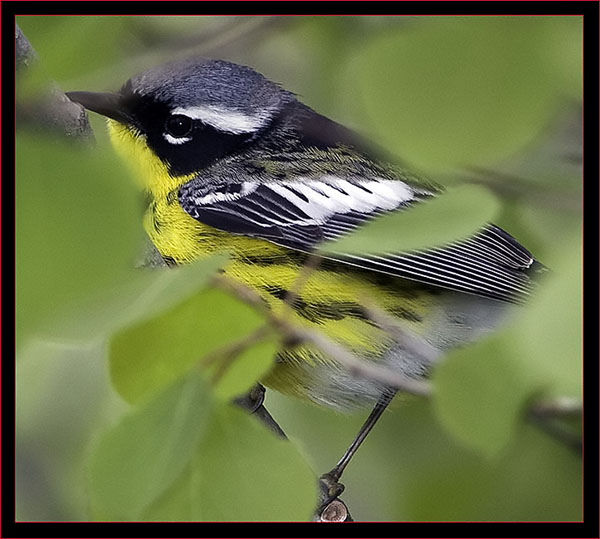
|
Close up views - Magnolia and Wilson's Warblers
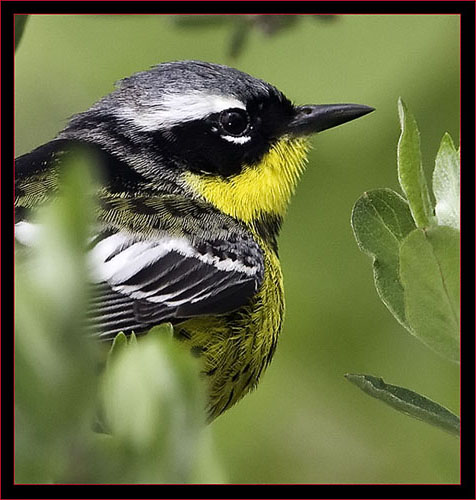
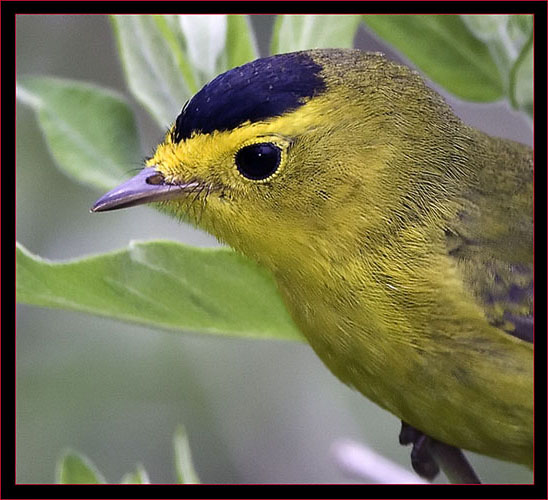
|
Marsh View at 70 millimeters
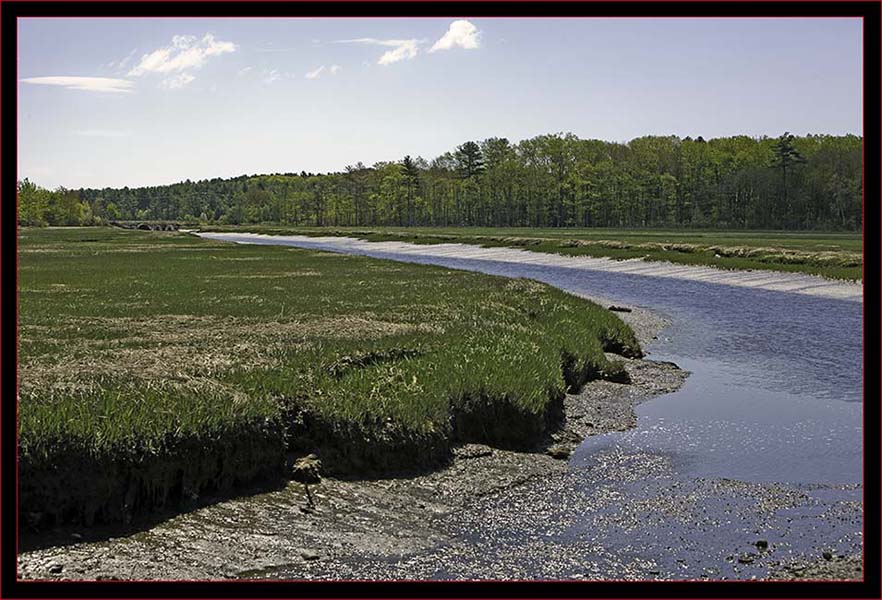
|
Male & Female Black-throated Blue Warblers
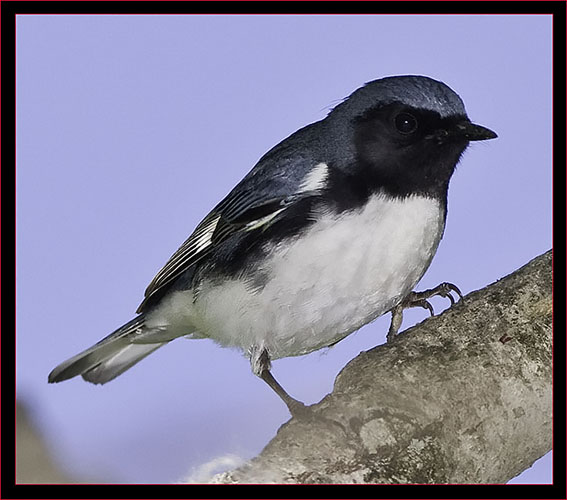
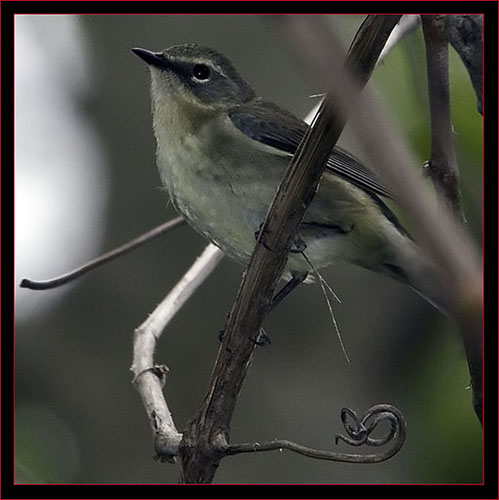
|
Blackpoll Warbler views - a new species for my Index
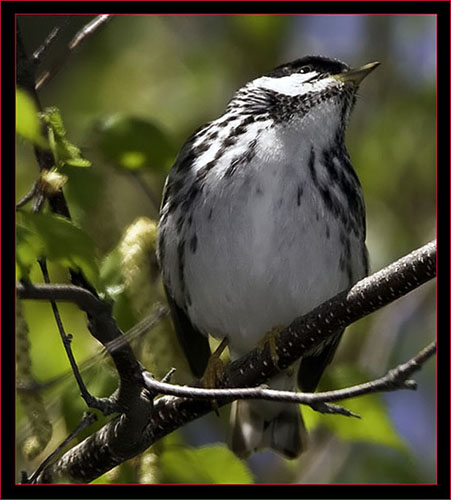
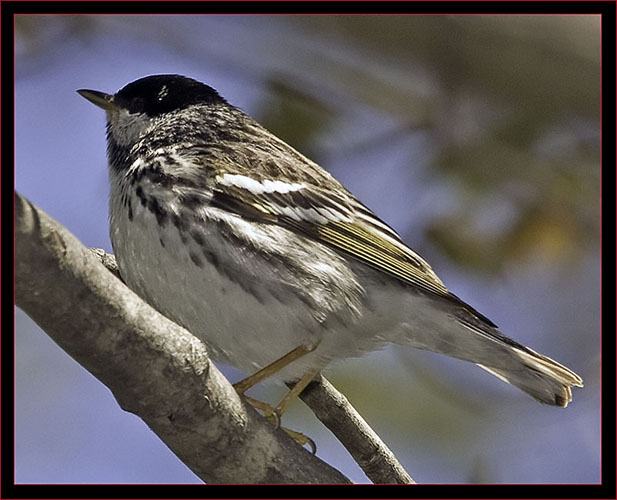
|
American Redstart, Northern Parula & Yellow Warbler photographed at Scarborough Marsh
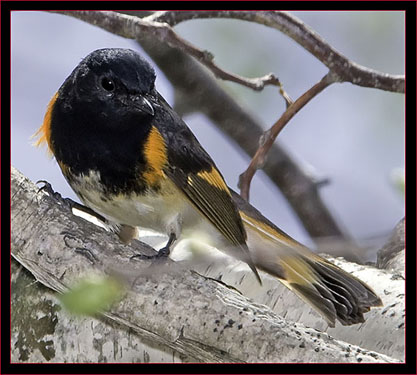
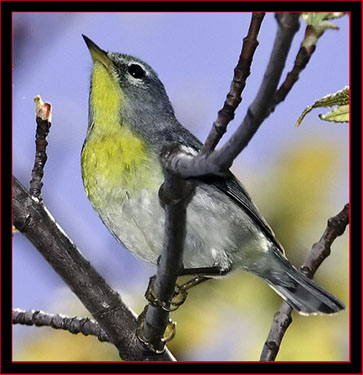
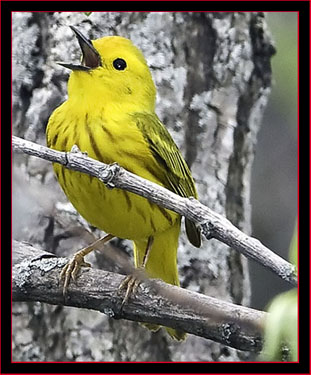
|
A Wilson's Warbler - this stump provided a clear line of sight provided a bird landed on it
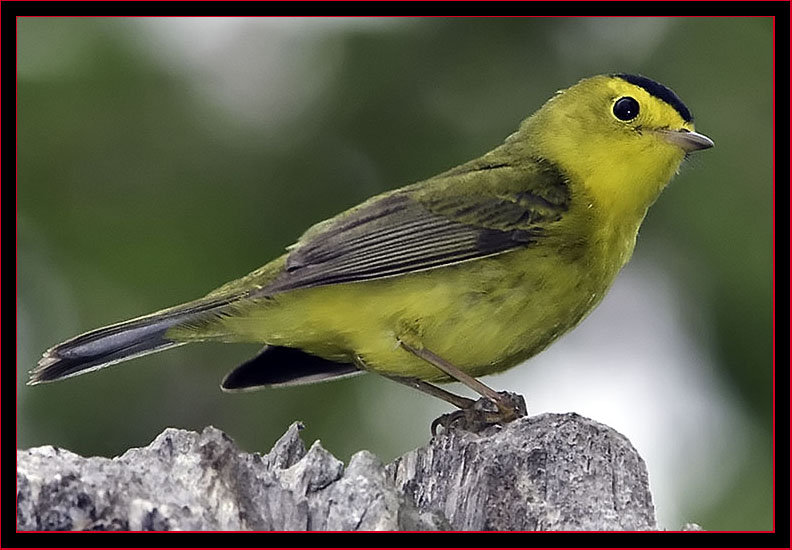
|
A Visit to Florida Lake - Freeport, Maine
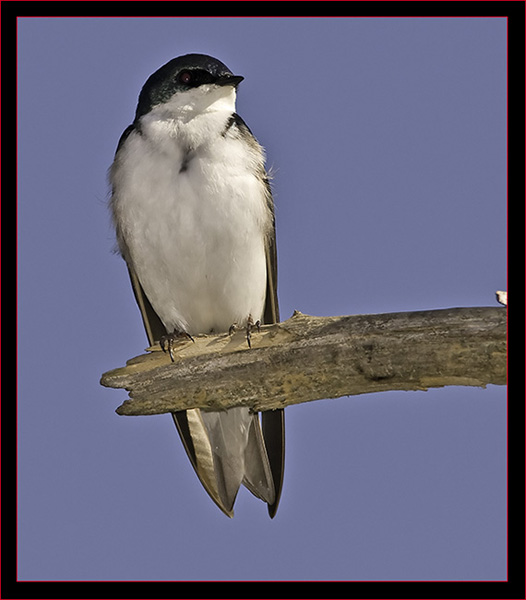
|
Florida Lake was the best opportunty I've had to photograph individual Tree SwallowsCanon 1Ds Mark III/EF 600mm F/4L lens extended to 840mm, 1/800 second @ f/8, ISO 640 with flash One Sunday Linda and I traveled to Freeport to check out Florida Lake, a site that I’d visited previously with Derek on one of his store sponsored bird walks. I knew this spot had warbler potential plus the possibility of shorebirds and ducks passing through the area. It was an interesting time and worth the effort. One of impressive things I recall most about the day is the Tree Swallows... Many had taken up residence in pole mounted boxes and were perched on top of each box checking the area and proclaiming their territory. I learned that you could get reasonably close without stressing the birds, 'close' being subjective and at 840 millimeters I was able to obtain some great images. These birds are common but not always the easiest to photograph. |
Tree Swallow close up views
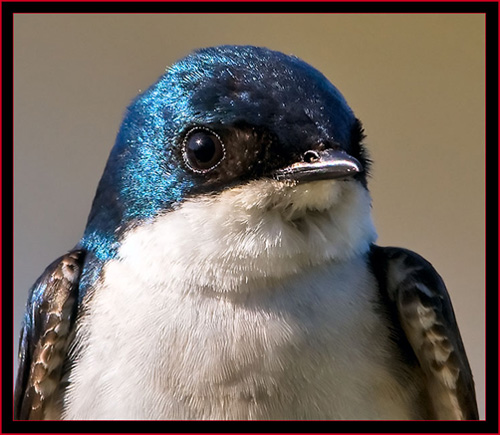
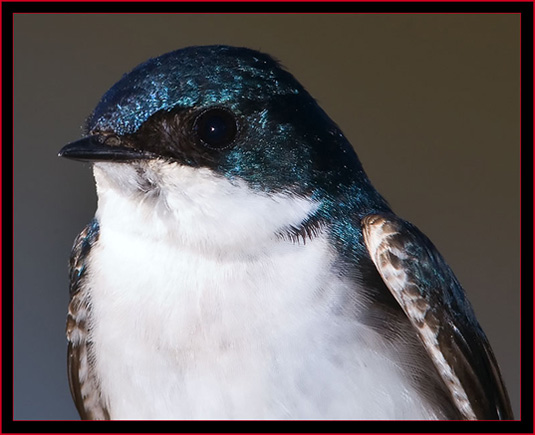
|
Another detailed Tree Swallow view - Canon 1Ds Mark III/EF 600mm F/4L lens extended to 840mm, 1/200 second @ f/16, ISO 400 with flash
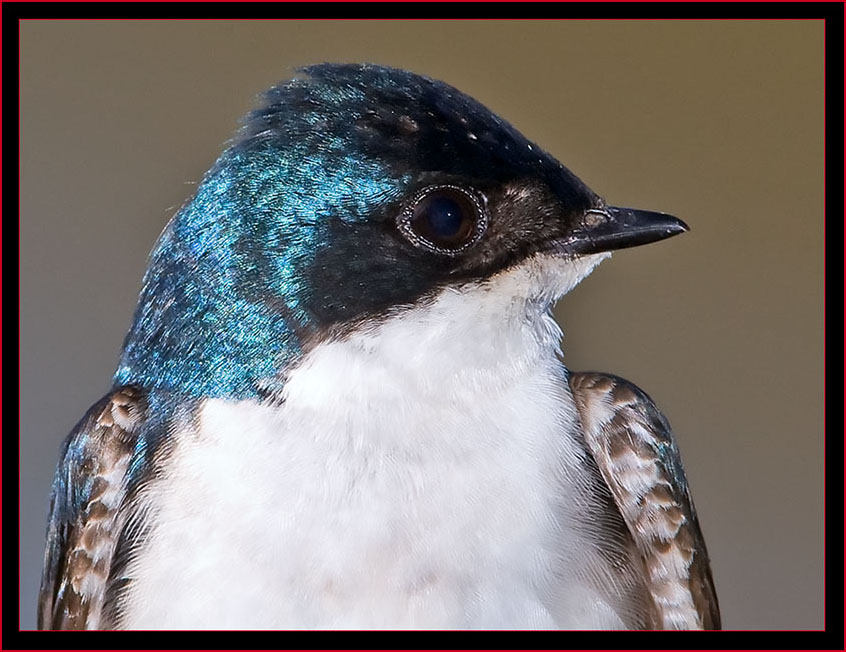
|
One of my favorites - A Tree Swallow with Attitude...This is one of my favorite images in recent history. This swallow was standing on top of one of the nesting boxes. Every now and then the bird would let out a squawk so I moved nearer the box to attempt to capture the moment... I took the time to extract the swallow from the background and saved it so it may be utilized in a variety of settings like this one. Canon 1Ds Mark III/EF 600mm F/4L lens extended to 840mm, 1/320 second @ f/16, ISO 400 with flash
|
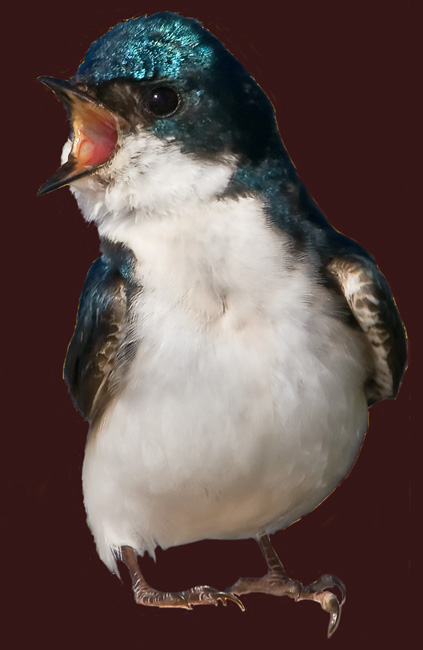
|
A Red-winged Blackbird, Canada Warbler & Black-capped Chickadee
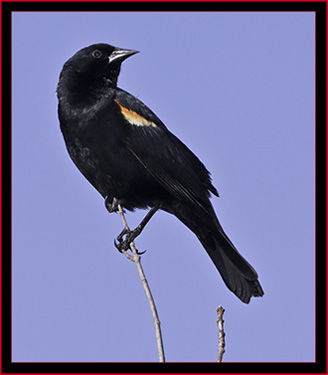
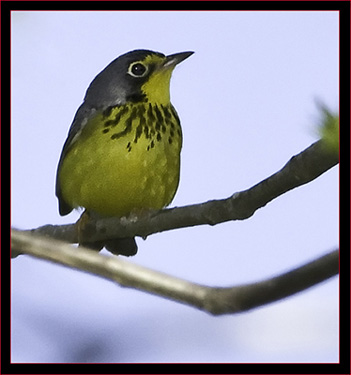

|
A Canada Goose family
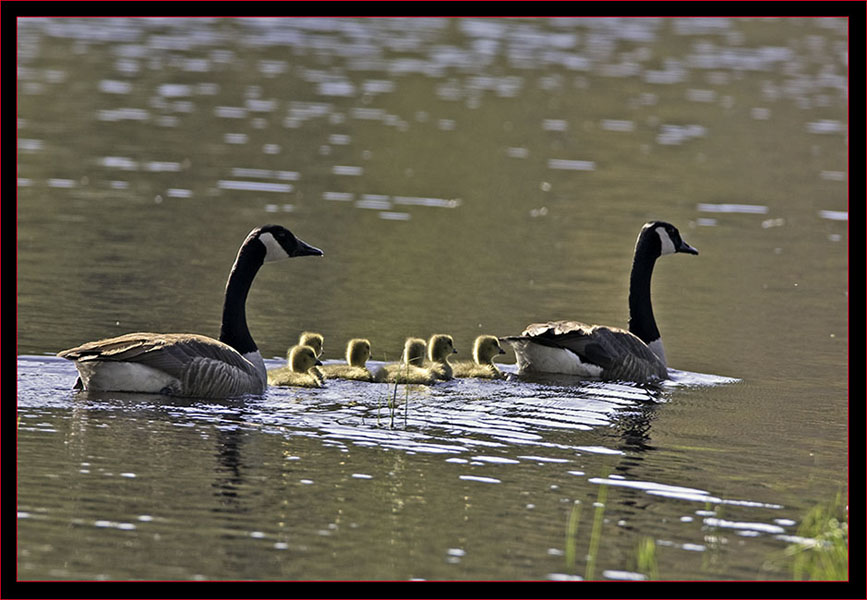
|
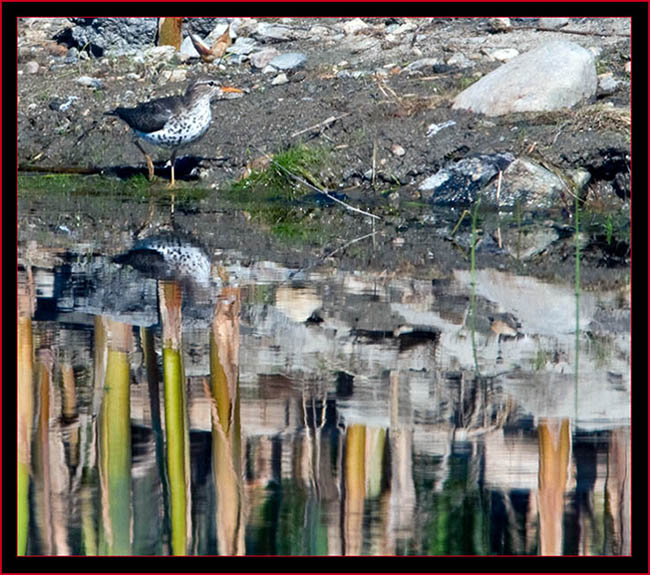
|
Spotted Sandpiper View - Florida LakeFlorida Lake had much to offer and we were pleased with the warbler count. I took a series of photographs in the wooded areas of Black-throated Green, Canada & Magnolia Warblers, Common Yellowthroats and some Lesser Yellowlegs in the water. Most were okay but not great I found once I evaluated the images at the computer. This is definitely a place worth visiting when it all starts again in May 2009. |
Vocal Tree Swallow...As we leave this Florida Lake section I’d like to close it out with one last image of this vocal Tree Swallow. I believe this is an appropriate ending to this photographic session... If a bit higher I may have been able to obtain a close up looking down the bird’s gullet. Canon 1Ds Mark III/EF 600mm F/4L lens extended to 840mm, 1/400 second @ f/16, ISO 400 with flash
|
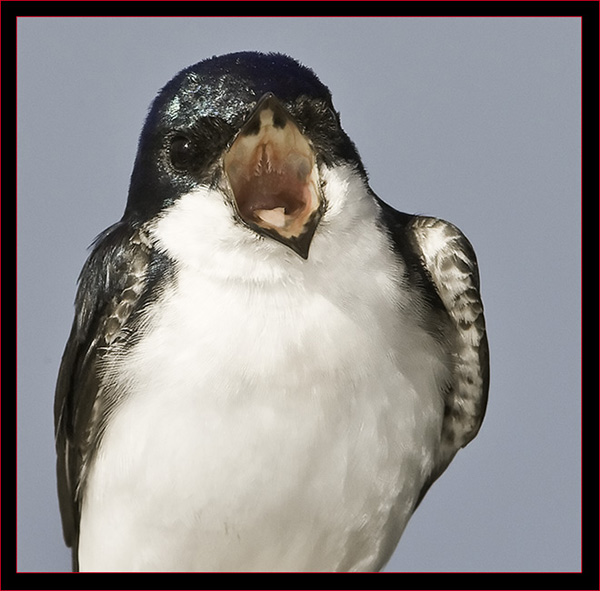
|
Photographing Loons!
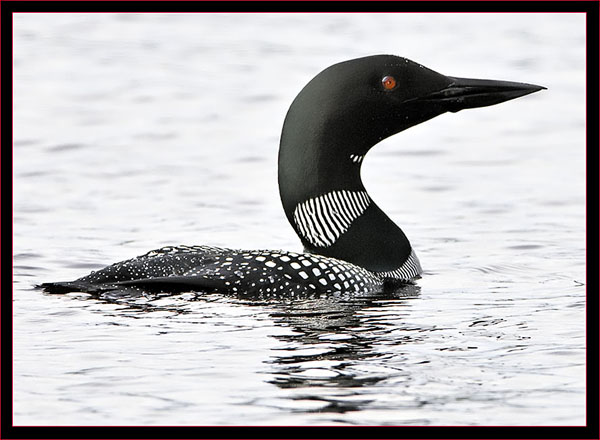
|
Common Loon on Bonney Eagle Lake in BuxtonCanon 1Ds Mark III/EF 600mm F/4L lens extended to 840mm, 1/500 second @ f/10, ISO 640 with flashOne weekend Linda’s family was gathering at her folk’s camp in Buxton. They are well aware of my interest in photography and kept me informed of the activities around the lake where they summer. They may have more loons around but were aware of a pair across the water from their camp making daily rounds to their side of the lake. As the family gathered and enjoyed the day I kept and eye out just in case. Derek indicated to me that the best way to photograph a loon is from the water... If you approach them from land they have a widespread comfort zone and won’t allow you near but are much more forgiving if you’re on (or in) the water also. I kept this in mind as I searched for the pair. In a matter of hours we spotted them and I was informed that they usually swim in fairly close to shore and follow it along provided they aren’t disturbed. I had my tripod system ready to go, walked into the water not quite waste deep – And yes I was concerned having already lost one complete system to salt water – And yes again, all my gear is now fully insured, leveled the tripod and waited... Eventually they came within range and I took a series of exposures as they meandered a time in the area. The photo template below represents a sampling of this image group. |
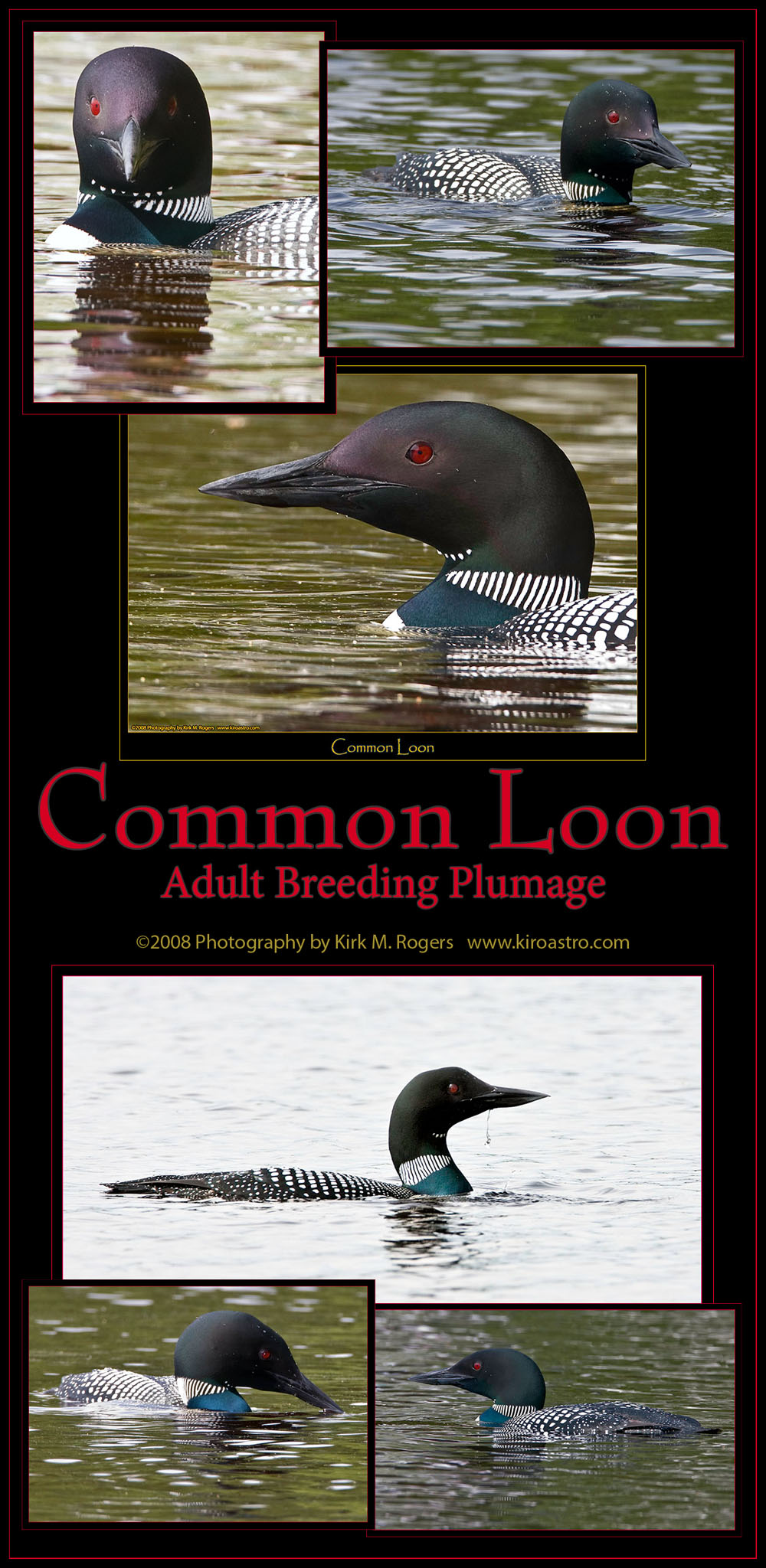
|

Kiro
October 2008
A note about the photography...All images in this account are by the author.
Any images viewed that are digitally framed and labeled have been added to my collection of works for sale.
These are displayed when at shows and events either packaged on foam core, professionally framed or ArtiPlaq™ mounted as a final for purchase.
The web versions are nice, but a full
resolution print significantly enhances the beauty of these images; all are ©2008 Photography by Kirk M. Rogers - any
reproduction, publication or transmission of this content without the written consent of the author is prohibited.
Please contact me should you have an interest in obtaining any of the images.
Home
or
Back to Writings
October 2008